The art of styling shelves combines function and aesthetic to transform blank wall space into personalized displays. From layering books and art to incorporating living greenery, each approach enhances both visual interest and practical storage. Texture mixing—through baskets, textiles, and varied materials—introduces depth, while strategic lighting, such as LED backlighting, accentuates focal points and creates ambiance. Color coordination and asymmetrical layouts like the “Triangle Method” guide the eye, fostering balance and flow across the shelf plane. Whether you favor minimalist styling or an eclectic mix of sculptures, seasonal rotations, and personal mementos, these 20 ideas will help you curate shelves that are as functional as they are beautiful.
1. Layer Books with Art and Objects
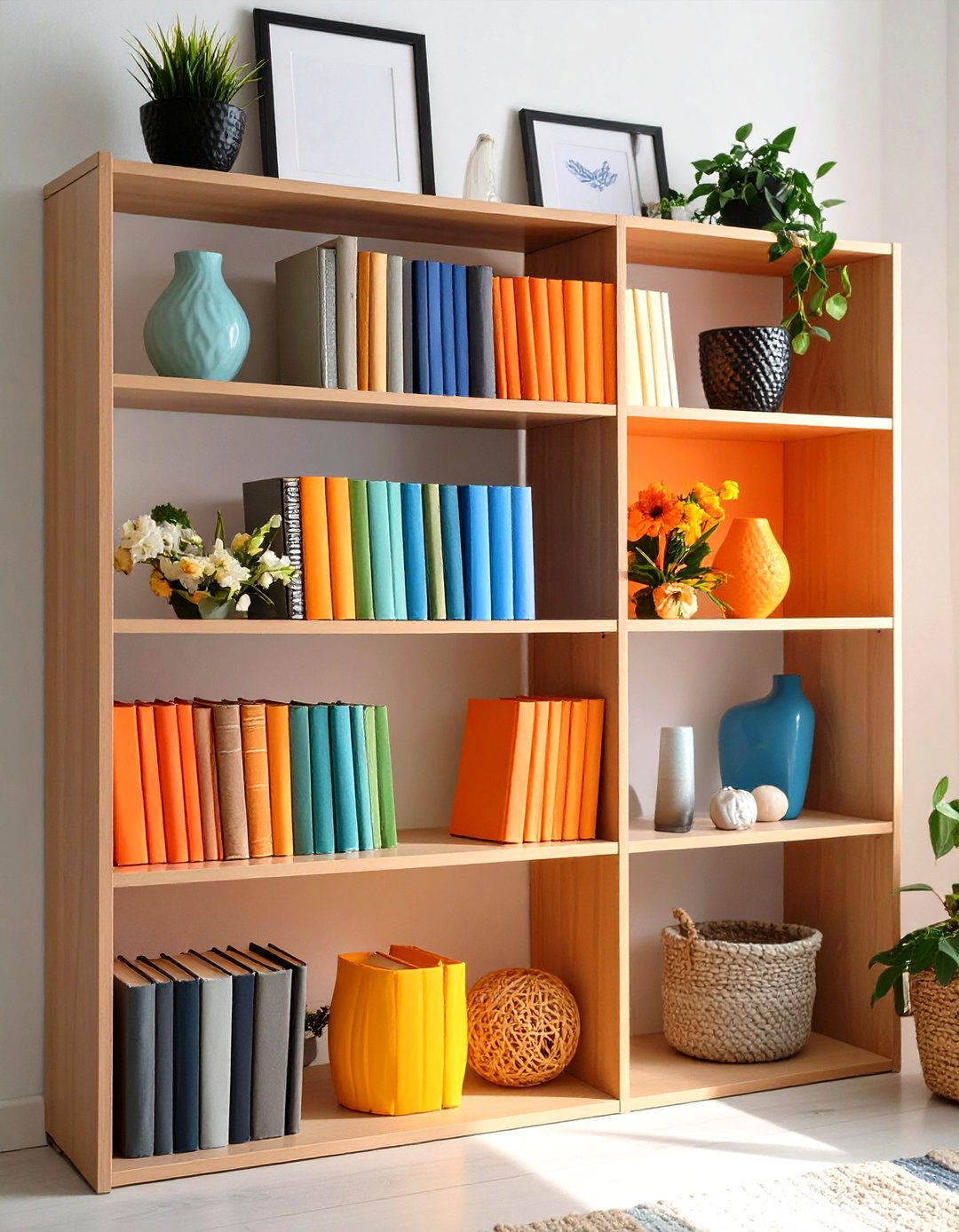
Layering books both horizontally and vertically creates visual interest and depth on shelves. Placing small art pieces behind books or leaning framed prints against the back panel adds a dynamic backdrop that brings personality to the display. Alternating between stacks of books and decorative objects balances function with style, ensuring the arrangement remains cohesive rather than cluttered. Design experts recommend this approach to avoid monotony and achieve a curated, gallery-like bookshelf look in any room.
2. Incorporate Greenery
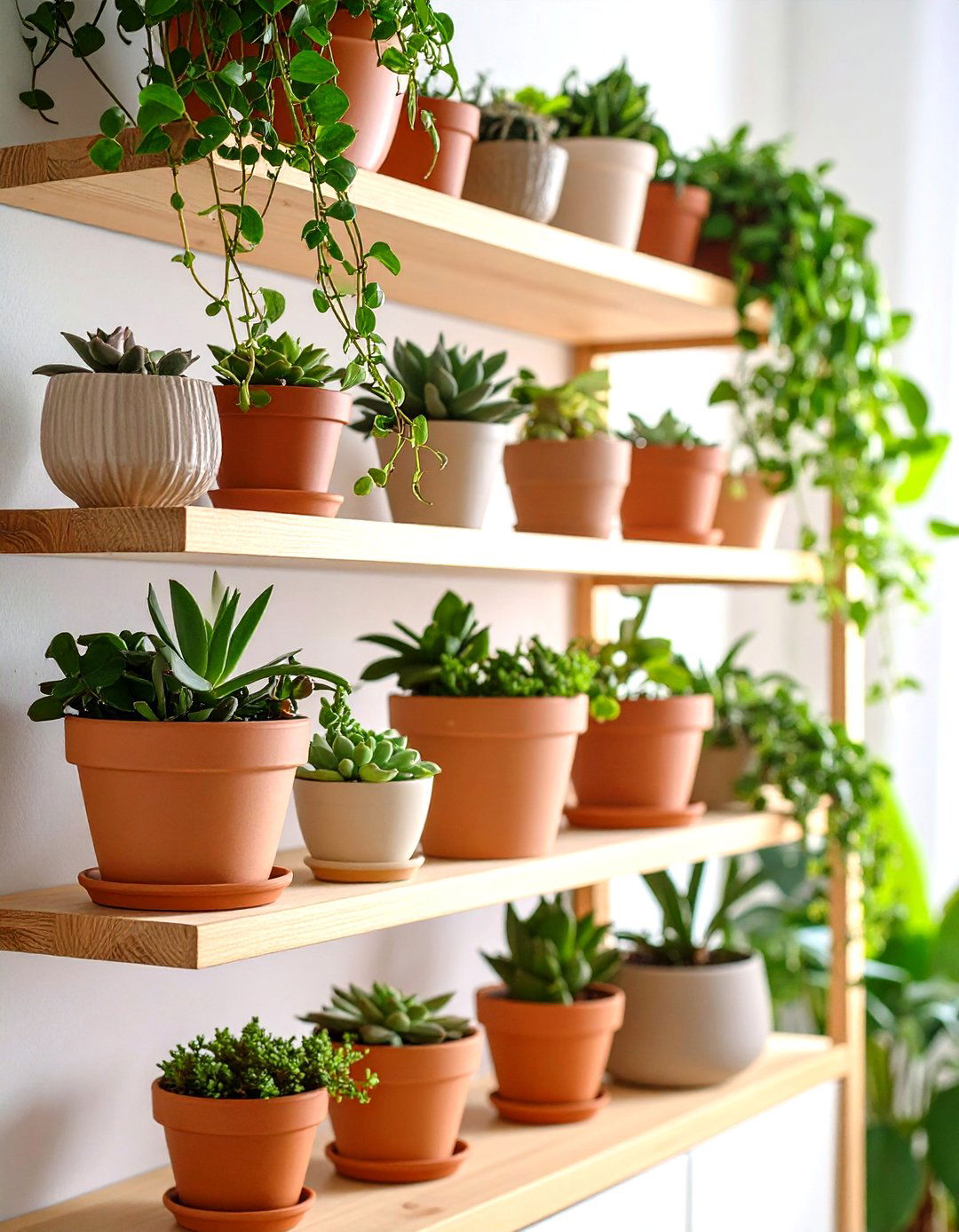
Introducing potted plants or trailing vines softens hard shelving lines and introduces living color and texture to your space. Small succulents or air plants in ceramic pots work well on narrow shelves, requiring minimal care while adding freshness and oxygen to the room. Hanging planters or wall-mounted shelves with cascading foliage draws the eye and maximizes vertical space, perfect for compact areas. Greenery also brings biophilic benefits, improving mood and concentration, making it ideal for home offices and living rooms alike.
3. Display Decorative Objects
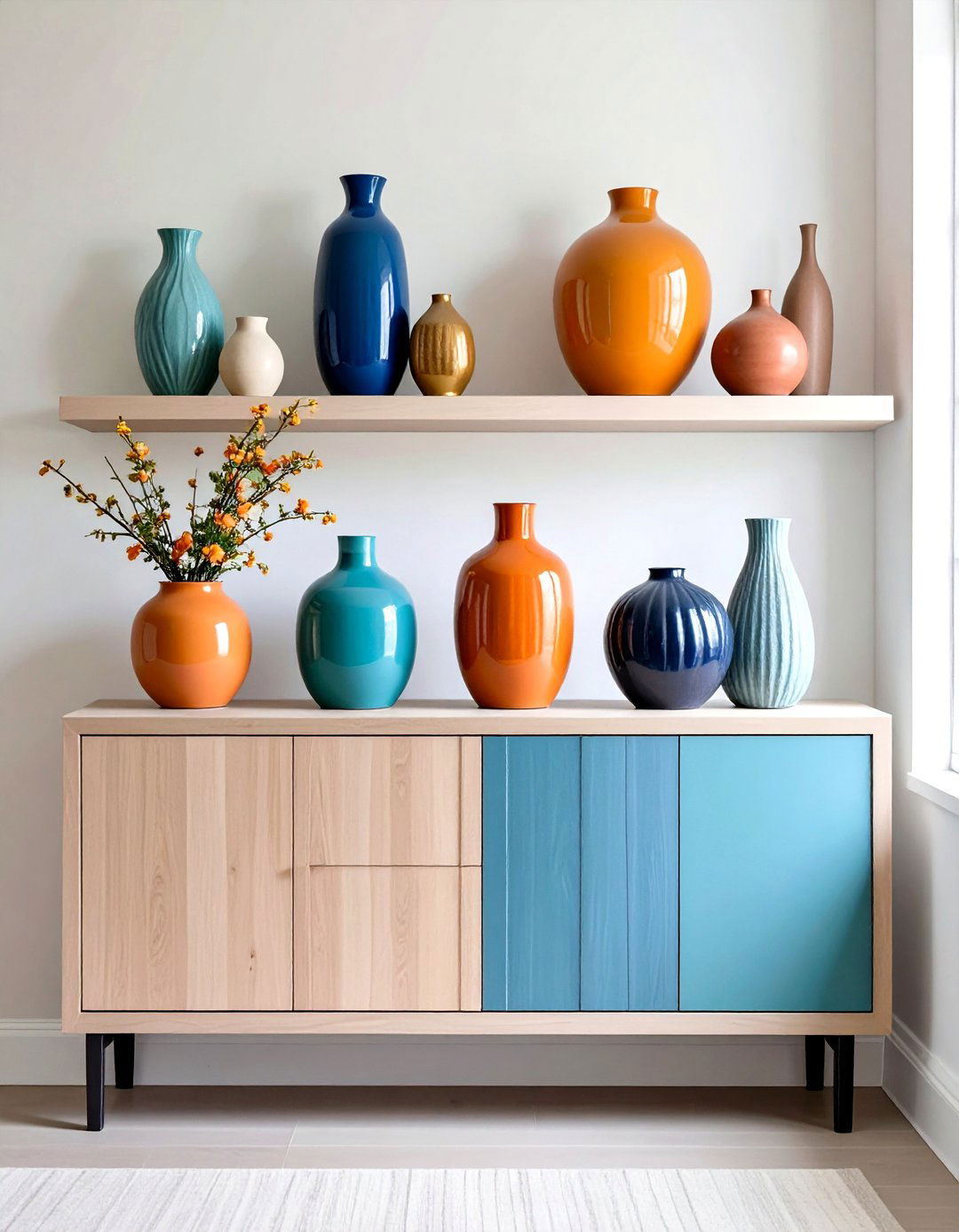
Collectible figurines, colorful vases, and sculptural objects make striking focal points when strategically placed on shelves. Grouping objects in odd numbers—such as threes or fives—creates a natural visual rhythm that feels balanced and intentional. Varying object sizes and materials, from ceramic to metal, enhances textural contrast and prevents the arrangement from appearing flat. Designers suggest mixing heirlooms with contemporary pieces to tell a personal story and keep the display evolving over time.
4. Use Baskets and Boxes for Storage

Woven baskets and decorative boxes conceal clutter while adding warm textures and earthy tones to shelving units. These storage solutions are especially useful on lower shelves to hide electronics, magazines, or office supplies out of sight yet within reach. Choosing baskets with built-in handles ensures easy access and mobility, making it simple to rearrange or declutter when needed. Layering boxes of different shapes and colors also contributes to depth, while maintaining a tidy, organized appearance.
5. Showcase Collectibles and Artifacts
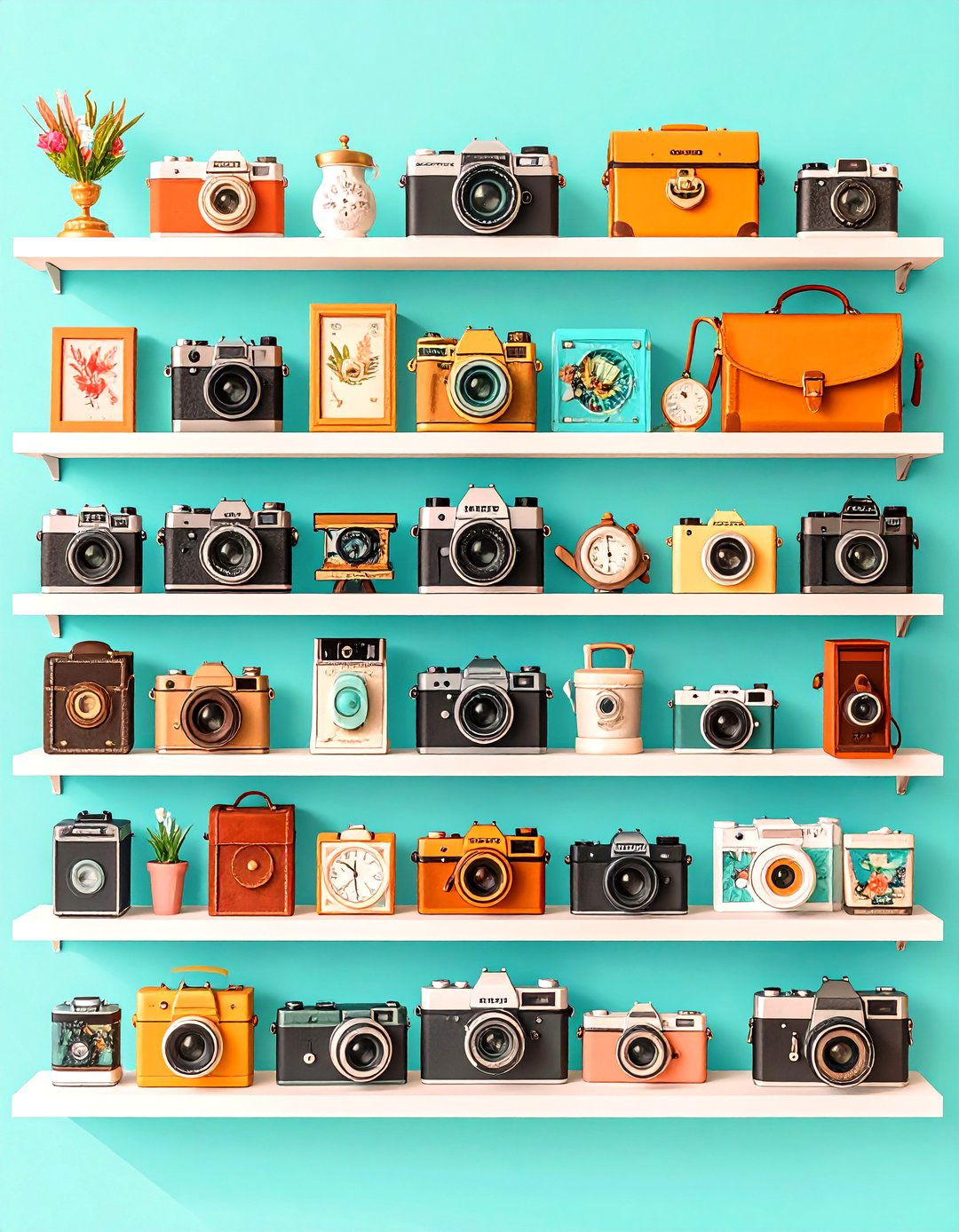
Shelves offer the perfect stage for showcasing travel souvenirs, vintage cameras, and family heirlooms. Placing collectibles at varying depths—from front edges to the back panel—creates a sense of discovery as each shelf invites closer inspection. Displaying each piece on small stands or risers can elevate its presence and prevent it from getting lost among books and other items. Balancing these treasures with open space allows each to stand out without overwhelming the overall design.
6. Combine Textures and Materials
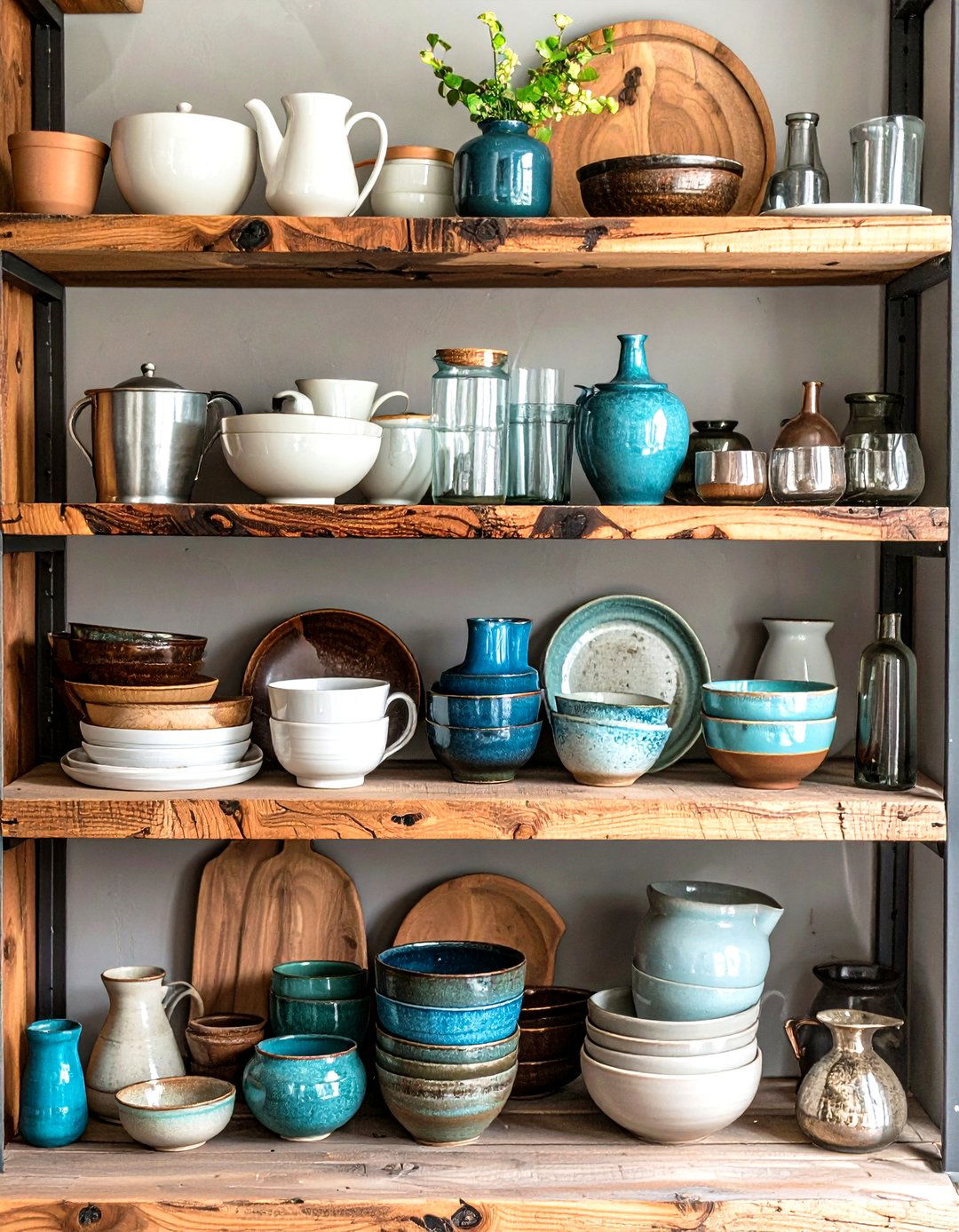
Mixing smooth ceramics with rough-hewn wood, metal, and glass introduces tactile variety to your shelves. Consider adding woven straw bowls or stone bookends to contrast glossy picture frames or sleek vases. This interplay of textures keeps the eye engaged and adds sophistication, especially when neutrals are paired with subtle metallic accents. The key is to limit the palette to two or three main materials to avoid a disjointed look.
7. Style Floating Shelves with Intent
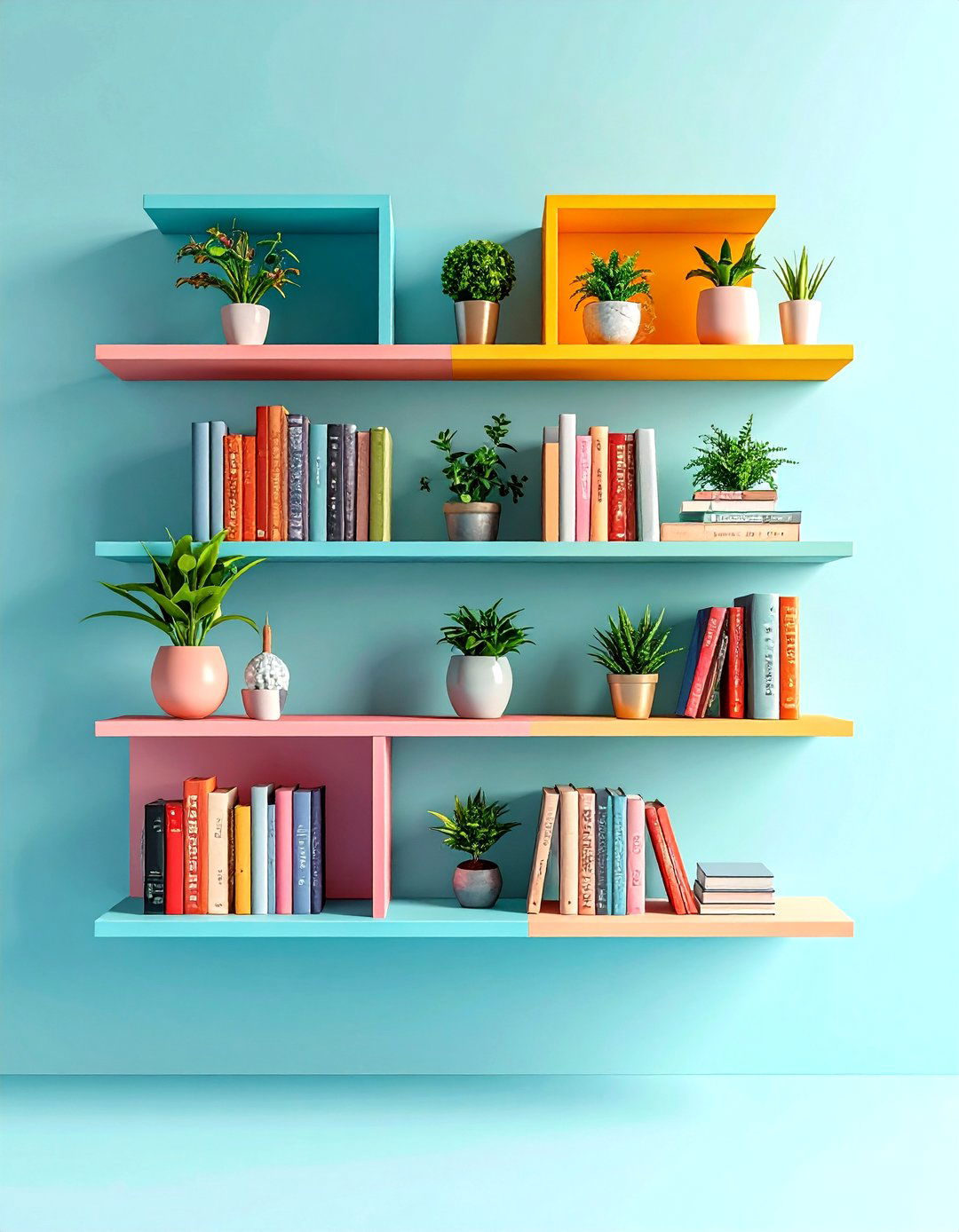
Floating shelves offer a modern, minimalist foundation that draws attention to the items displayed rather than bulky hardware. Arrange books, plants, and decorative pieces in staggered groupings to emphasize the airy quality and prevent overcrowding. Incorporate negative space by leaving at least one-third of each shelf empty, enhancing the sense of openness and balance. This styling method is especially effective in small spaces, ensuring the room feels light and uncluttered.
8. Install LED Backlighting
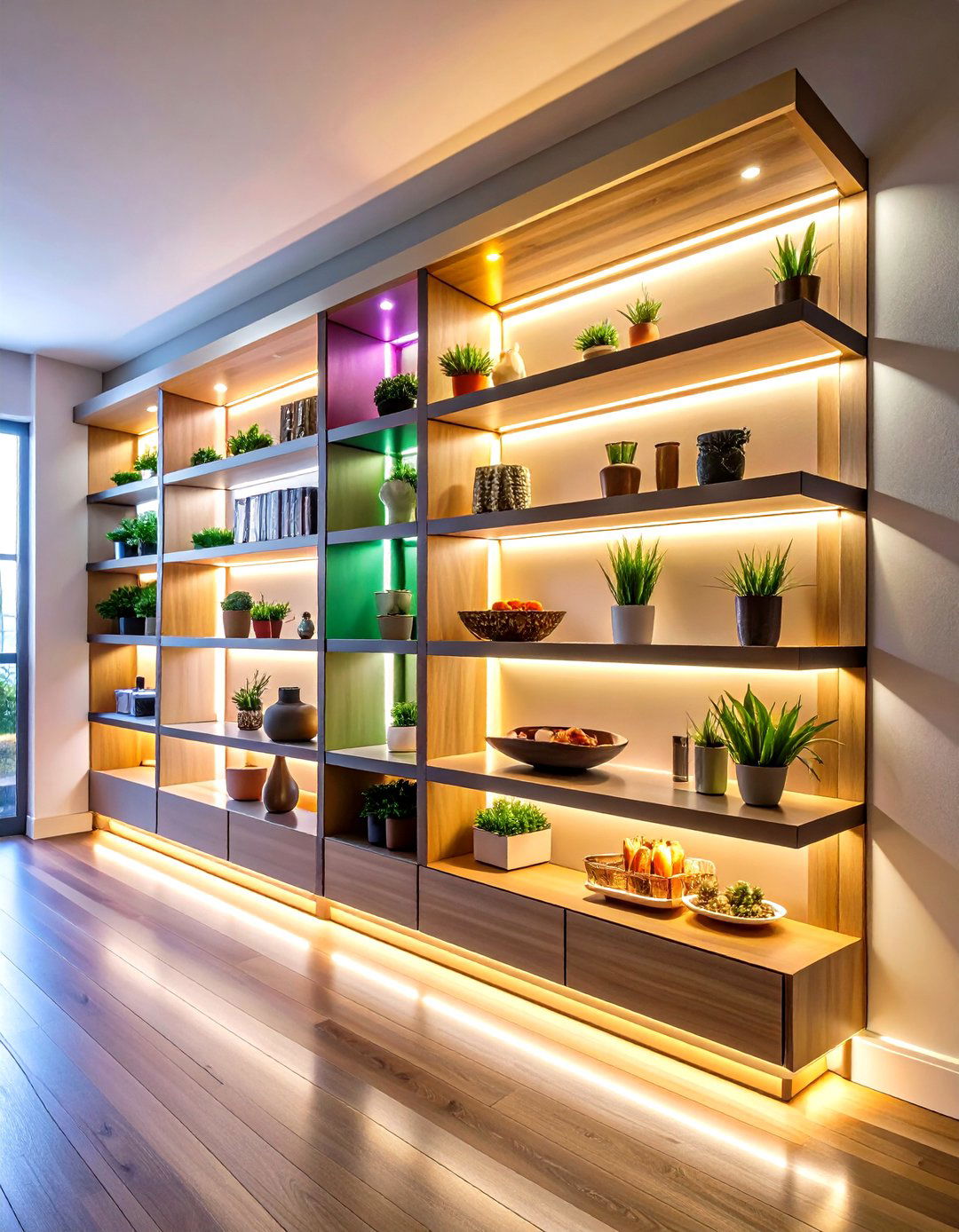
LED strip lights mounted along the underside of each shelf create a warm glow that highlights displayed objects and adds depth to the room. Dimmable LEDs allow you to adjust brightness for mood lighting or accent illumination during evening gatherings. Backlighting also enhances the colors and textures of books and artifacts, making them pop against darker shelving surfaces. This approach transforms functional shelves into dramatic focal points, ideal for living rooms and home theaters.
9. Coordinate by Color or Theme
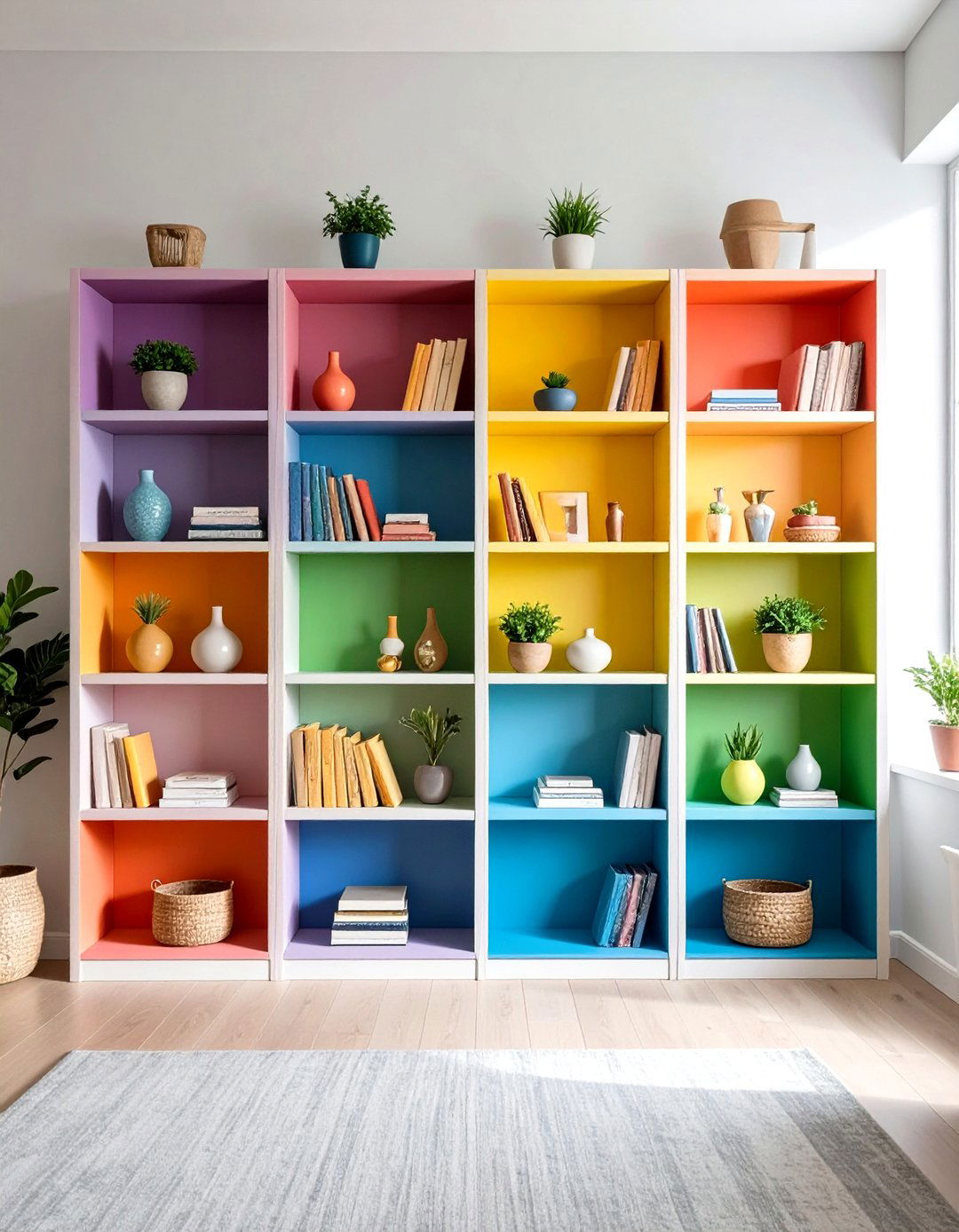
Grouping books and objects by hue creates a rainbow effect or monochromatic vignette that feels intentionally styled. For a more subtle look, choose two complementary colors—such as teal and ochre—and repeat them throughout the display for cohesion. Using themed accents, like coastal shells or vintage cameras, can reinforce a design narrative and guide future acquisitions. This method helps unify eclectic items, making even mismatched pieces feel part of a cohesive whole.
10. Embrace Asymmetry with the “Triangle Method”
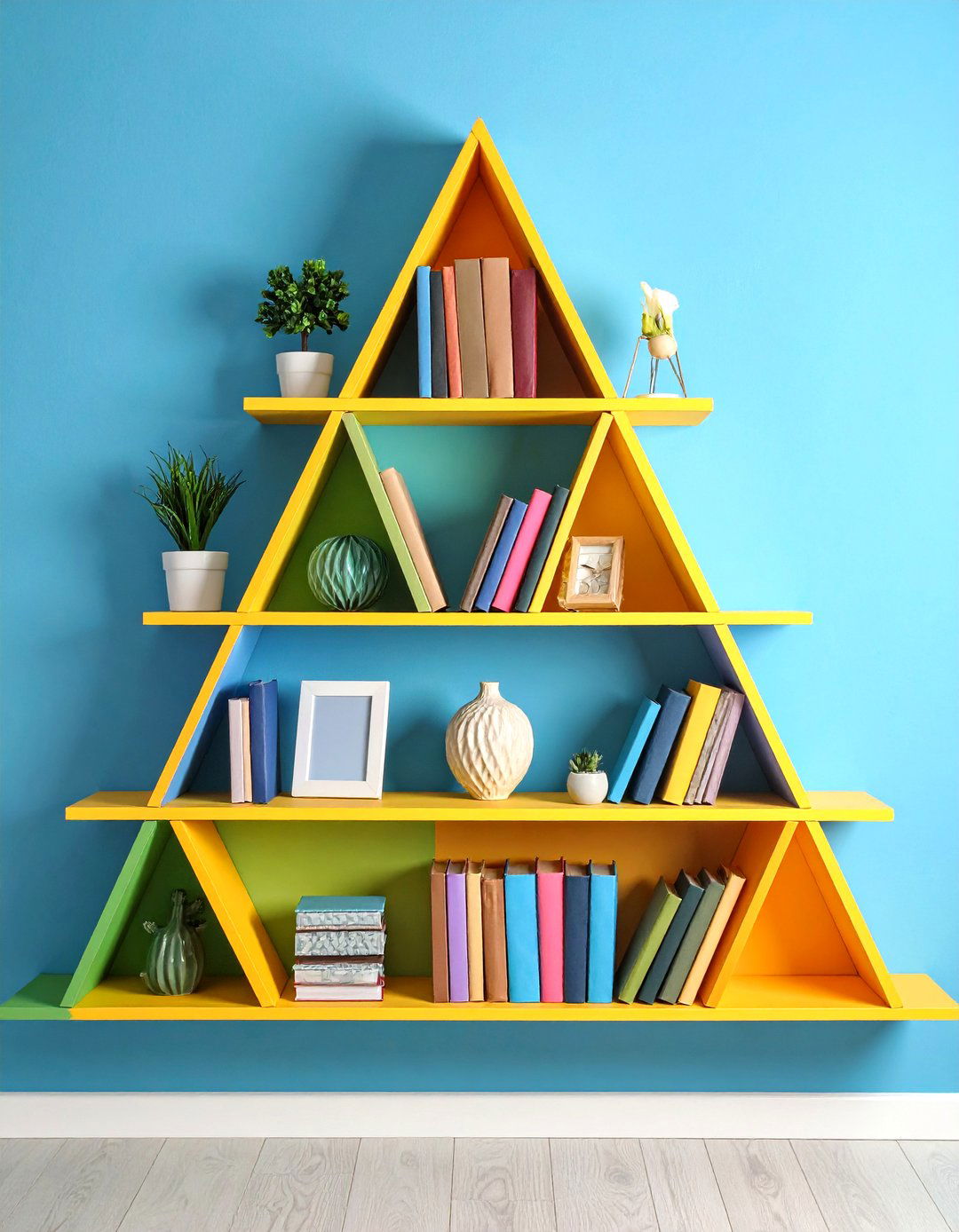
The “Triangle Method” arranges objects, books, and art in triangular groupings to lead the eye toward focal points. By varying heights—placing taller items at one corner and shorter pieces opposite—you create dynamic balance without strict symmetry. This technique encourages the use of odd-numbered groupings, which feel more organic and visually appealing than even-numbered pairs. It’s a simple yet powerful strategy to organize shelves in a way that feels both balanced and spontaneous.
11. Display Plates, Frames, and Artwork
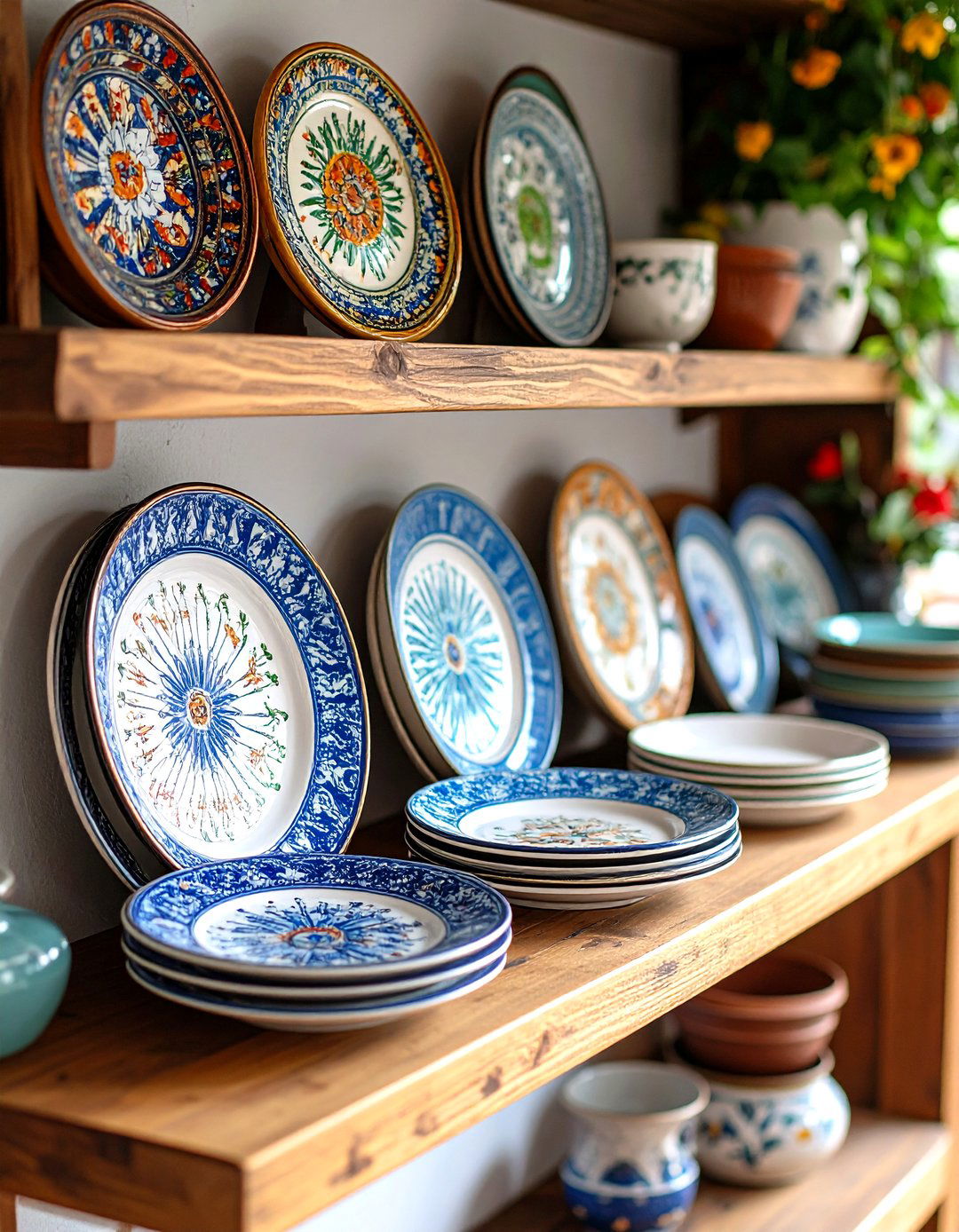
Leaning decorative plates or small framed artworks against the back of a shelf introduces immediate color and pattern contrasts. Mixing portrait and landscape orientations adds visual variety and encourages the eye to move across the shelf plane. This approach is particularly effective in kitchens and dining rooms, where functional objects like plates can double as décor. Incorporating small easels or plate stands elevates the pieces and prevents them from slipping into the shelf interior.
12. Add Mirrors to Create Depth
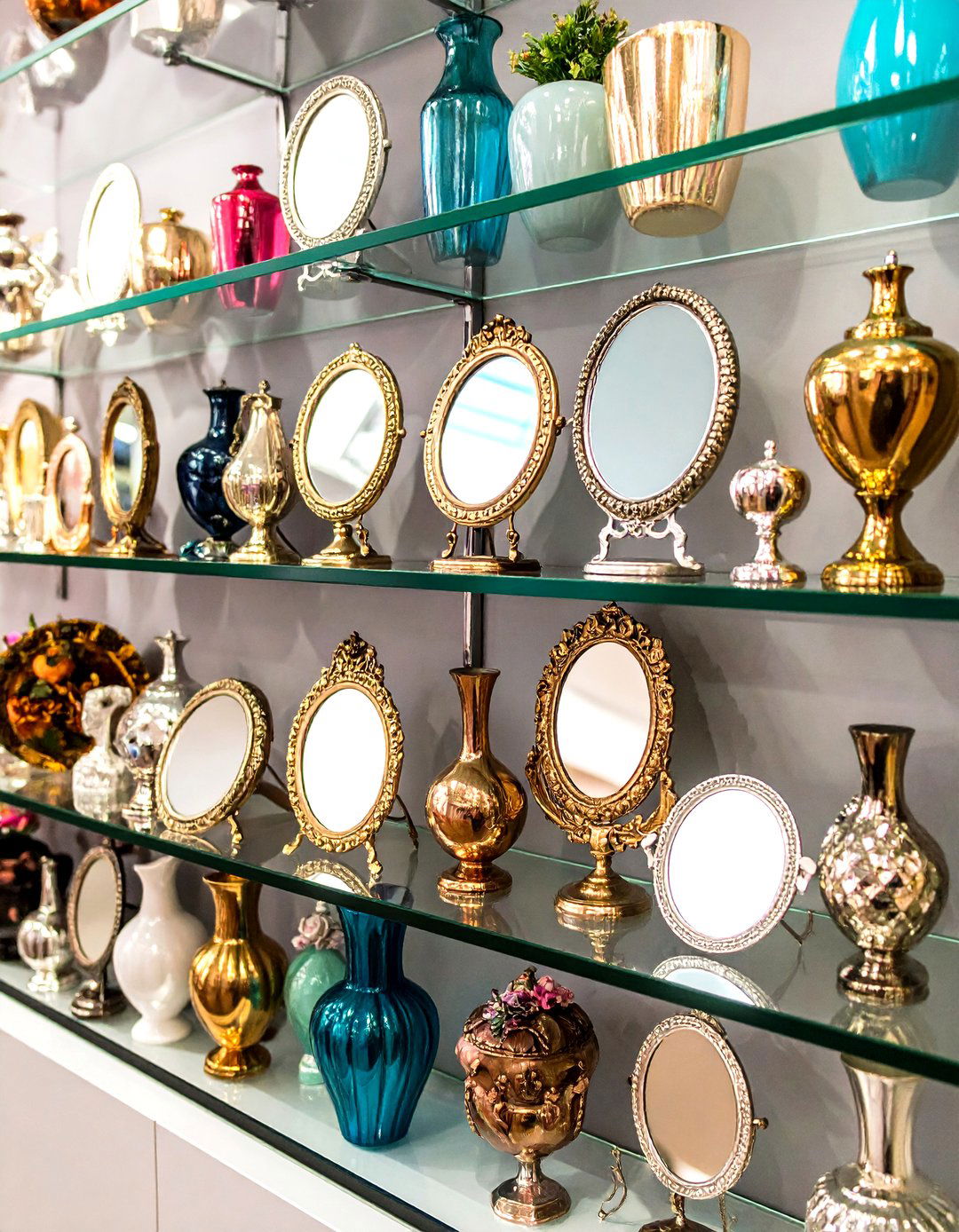
Small decorative mirrors placed on shelves reflect light and make rooms feel larger and more open. Opt for beveled frames or metallic finishes to add a touch of glam while catching and diffusing ambient light. Position mirrors behind vases or sculptures to double the visual impact and create a sense of layering. This trick works especially well in low-light hallways or cozy reading nooks, elevating the sense of brightness and space.
13. Incorporate Personal Photos and Mementos
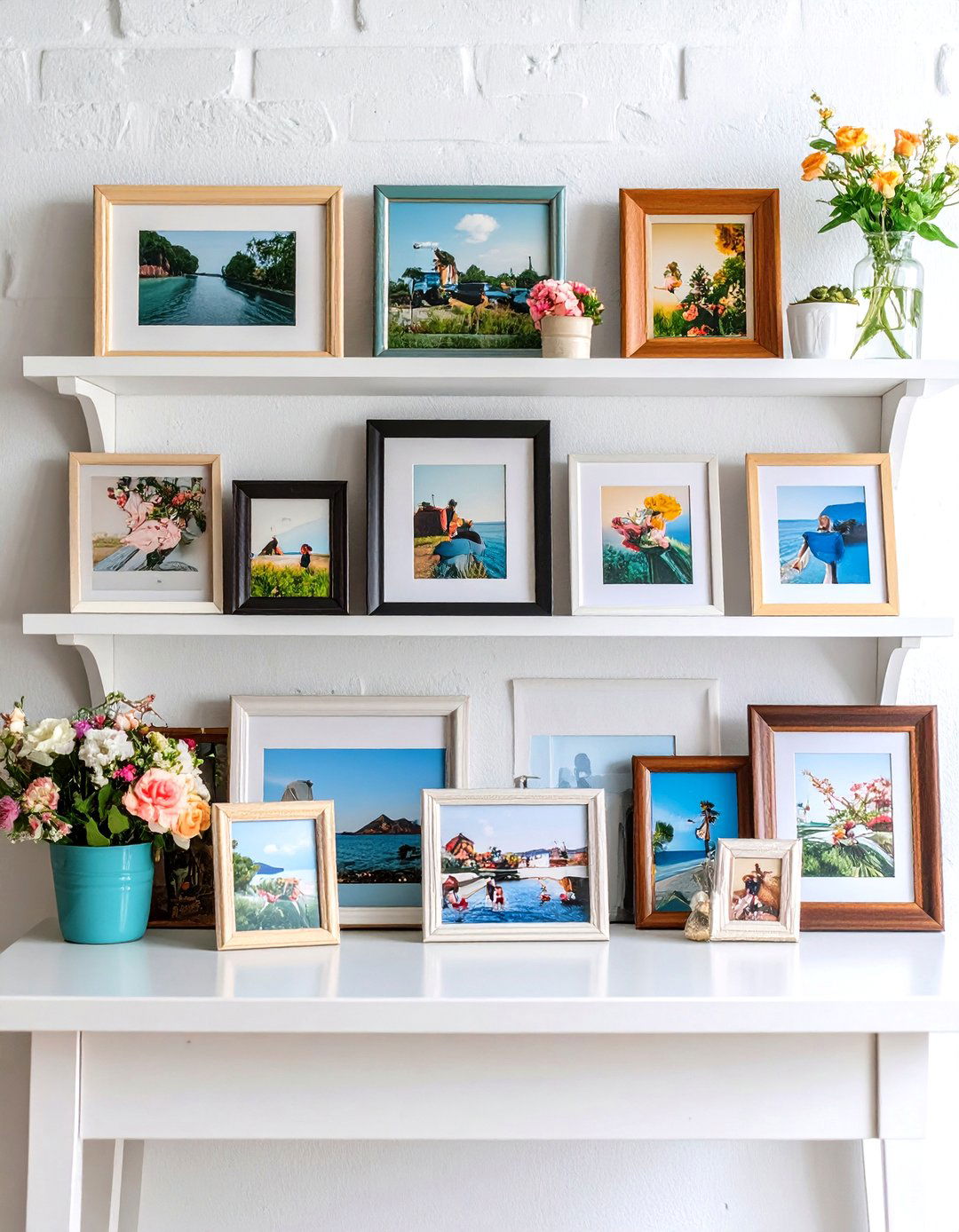
Framed family photos, postcards, and small souvenirs infuse shelves with personal narrative and emotional warmth. Mix frames of different sizes and finishes to maintain an eclectic feel that mirrors life’s varied moments. Pair these mementos with neutral backdrops—like white shelves or light wood—to ensure the personal items remain focal points rather than blending into the décor. Rotating photos seasonally keeps memories fresh and invites regular interaction with your display.
14. Rotate Seasonal and Trending Decor
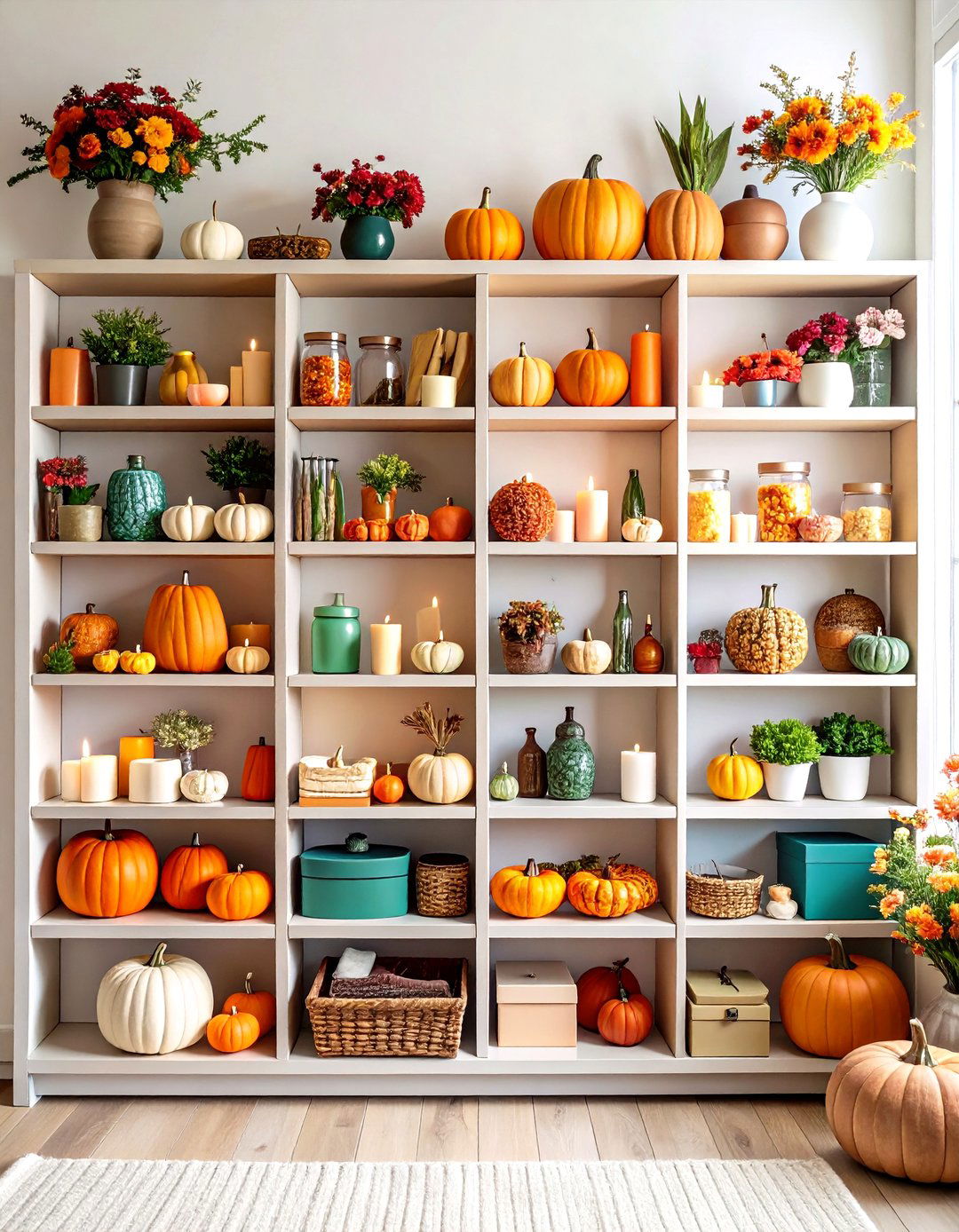
Updating shelves to reflect seasons—such as adding autumnal candles and gourds or springtime florals—keeps your space feeling current and festive. Using swap-out décor boxes or baskets simplifies the transition between themes without extensive re-styling. Trendy accents, like ceramic mushrooms or micro-sculptures, can be integrated alongside classic pieces for a playful twist. This practice encourages creativity and ensures your décor evolves with holidays, seasons, and personal tastes.
15. Mix Heights and Shapes for Visual Rhythm

Vary object heights—combining tall candlesticks with low bowls—to guide the eye in an undulating motion across the shelf. Round vases, angular bookends, and organic sculptures introduce shape contrasts that prevent monotony. Group similar shapes in clusters—such as three round objects—to reinforce design unity while still allowing for diversity in texture and finish. Balanced repetition of key shapes creates a cohesive narrative that feels both intentional and relaxed.
16. Add Candles and Lanterns for Ambiance

Candles in glass votives or lanterns introduce soft, flickering light that enhances the cozy factor of any room. Grouping candles of varying heights on a dedicated shelf corner creates an intimate vignette perfect for evening relaxation. Choose scented candles to add olfactory interest, reinforcing the multisensory appeal of your shelving display. Ensure safety by placing candles on heat-resistant trays or stands to protect wood surfaces and prevent wax drips.
17. Incorporate Textiles and Soft Accents
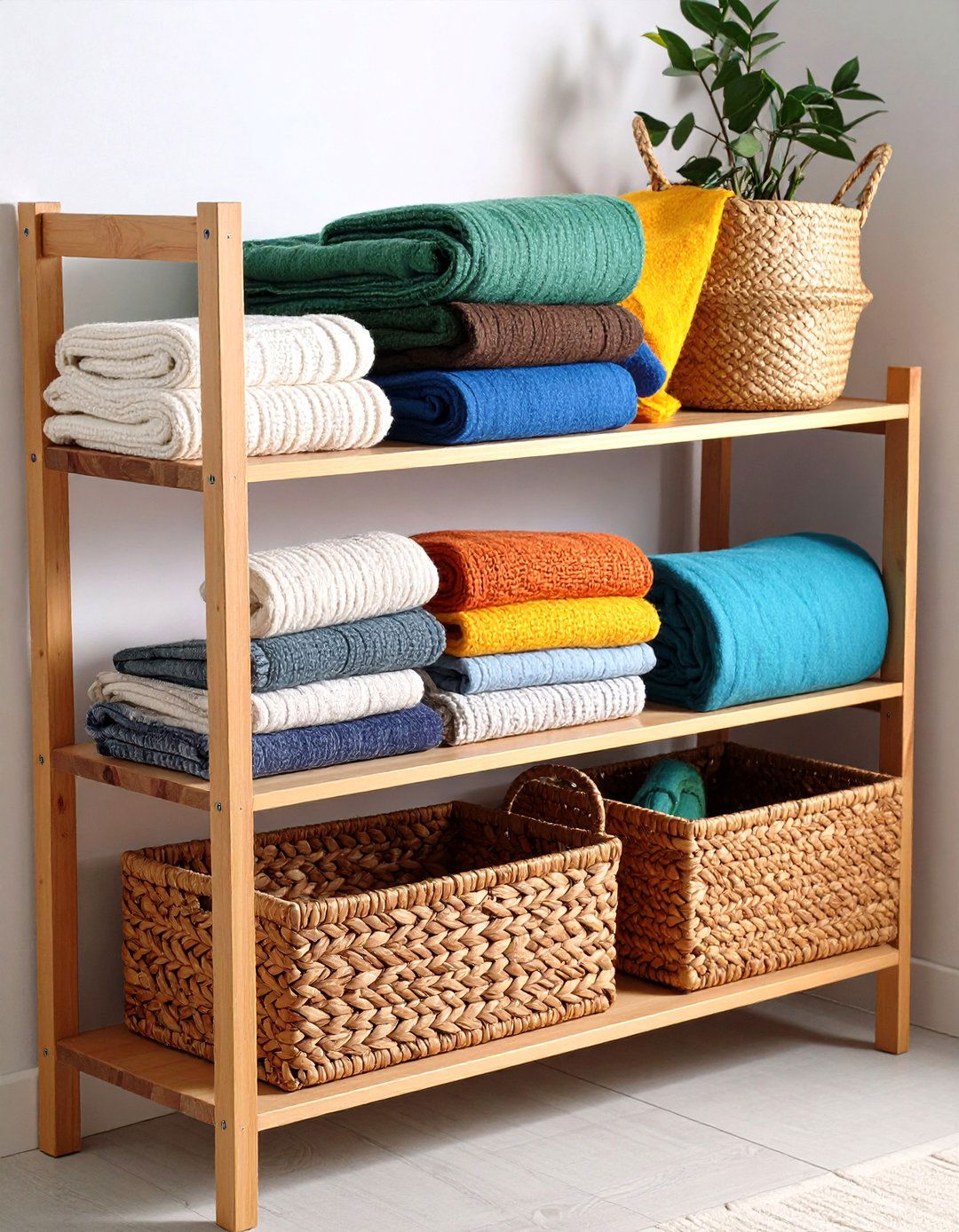
Draping a small throw or folded textile adds warmth and softness to hard shelving lines. Macramé hangings or woven wall pockets can be hung directly above or beside shelves to extend the décor vertically. Storage bins made of fabric introduce bold patterns or muted neutrals, depending on your color scheme, while concealing contents neatly. Textiles also offer a tactile contrast when paired with metal and wood elements, enriching the sensory experience.
18. Showcase Sculptures and Art Objects
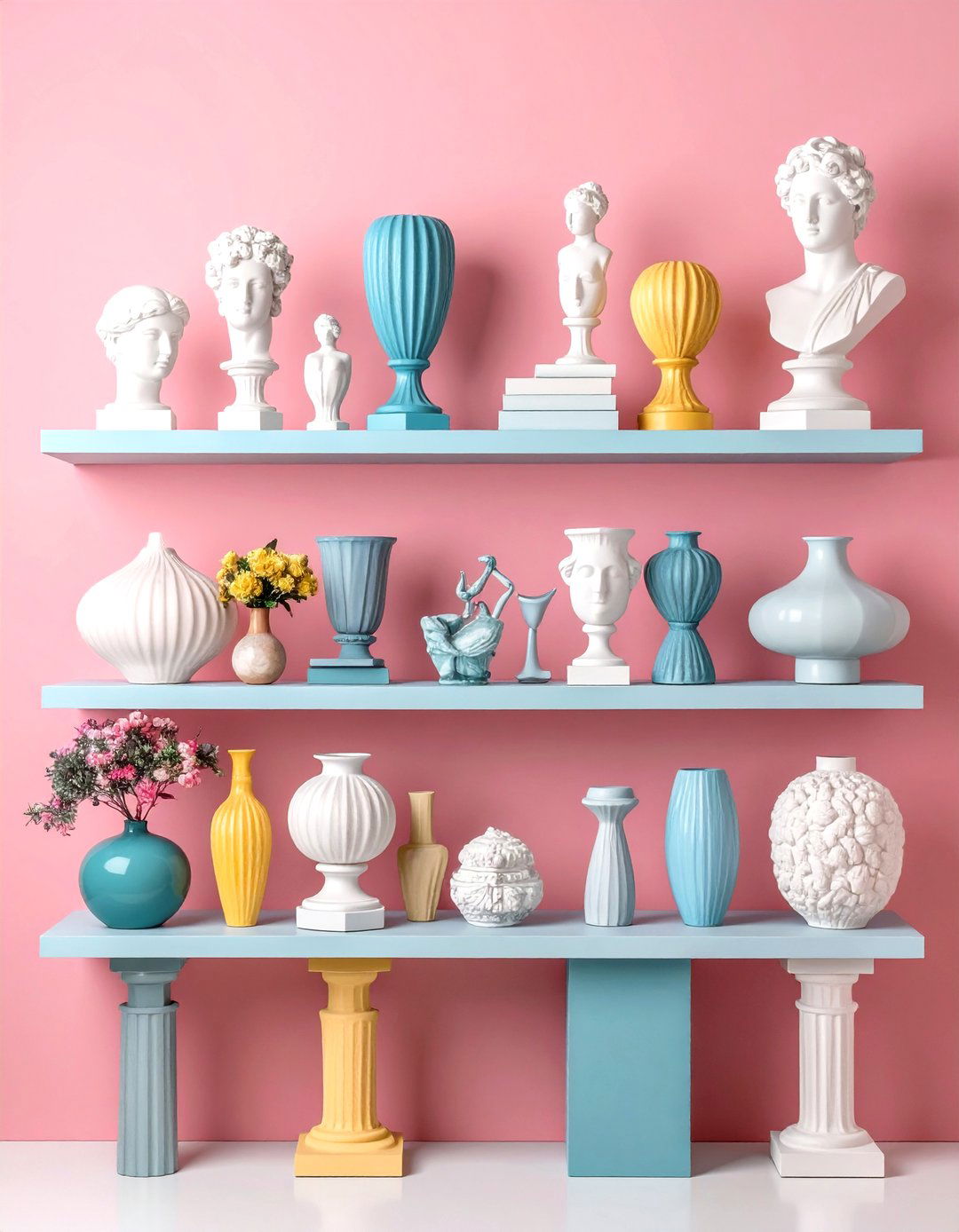
Statement sculptures—whether ceramic busts or metal abstracts—serve as eye-catching centerpieces on mid-level shelves. Placing art objects on minimalist plinths or stands elevates their prominence and separates them from books and smaller trinkets. Mixing classical references, such as Greek busts, with modern art pieces adds historical depth and contemporary flair. Rotate featured sculptures seasonally or whenever you acquire new pieces to maintain an ever-evolving gallery feel.
19. Opt for Minimalist Styling
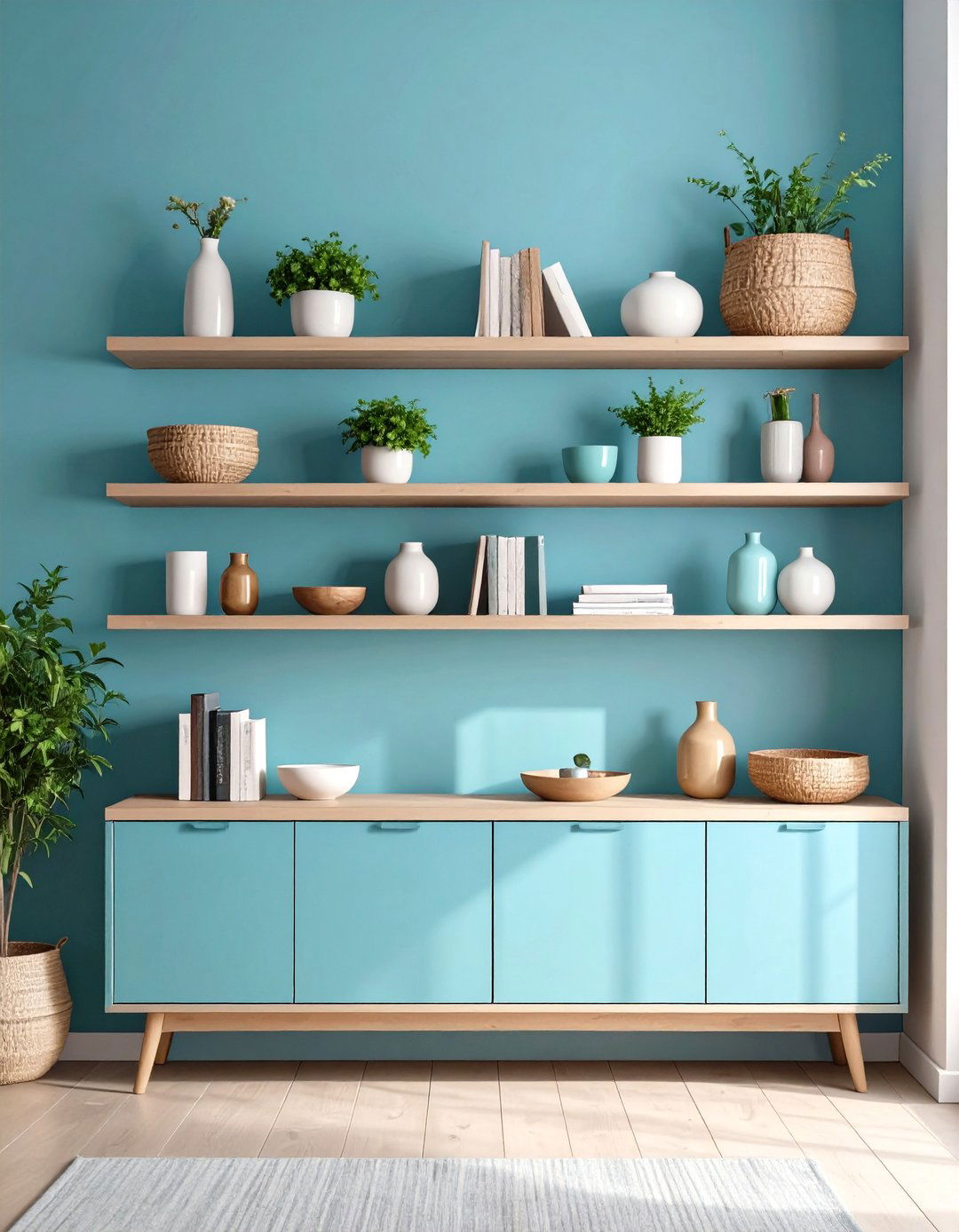
A minimalist shelf features only a few well-chosen items, emphasizing negative space and clean lines for a calm, uncluttered look. Restrict decorations to two or three categories—like books, a plant, and one statement object—to avoid visual overload. Use matching containers or identical frames to create repetition that reinforces the minimalist theme. This approach suits modern interiors and small spaces, where simplicity enhances perceived roominess and order.
20. Install Built-In Shelving for Seamless Integration
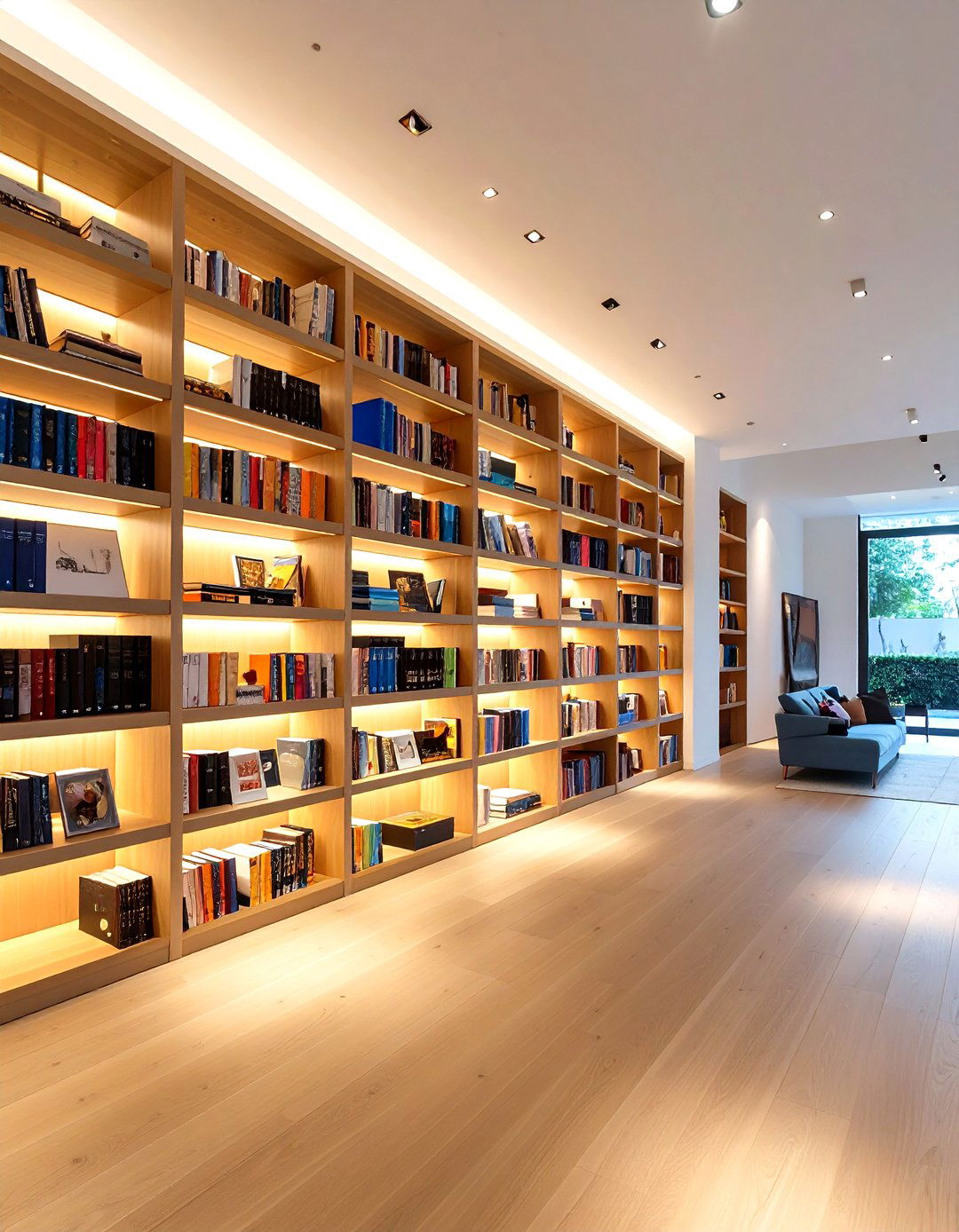
Built-in shelves provide a custom, architectural look that seamlessly integrates with walls and trim. Floor-to-ceiling units maximize vertical storage and become focal points, perfect for displaying books, art, and collectibles in one cohesive installation. Incorporate adjustable shelf heights to accommodate items of varying sizes, from tall vases to stacks of magazines. Consider adding integrated lighting or cabinet doors on lower sections for concealed storage and a polished finish.
Conclusion:
Curating shelf décor is an exercise in balancing function with personal expression, harnessing elements like texture, color, and lighting to craft spaces that reflect your style and needs. From minimalist arrangements to elaborate layered compositions, each idea offers a framework to showcase books, art, plants, and collectibles in harmony with your home’s architecture. By rotating seasonal accents, experimenting with asymmetrical layouts, and integrating innovative lighting, you can keep your shelving displays fresh and engaging over time. Ultimately, the best shelf décor reflects who you are—your passions, memories, and design sensibilities—making every glance at your shelves a moment of inspiration and joy.



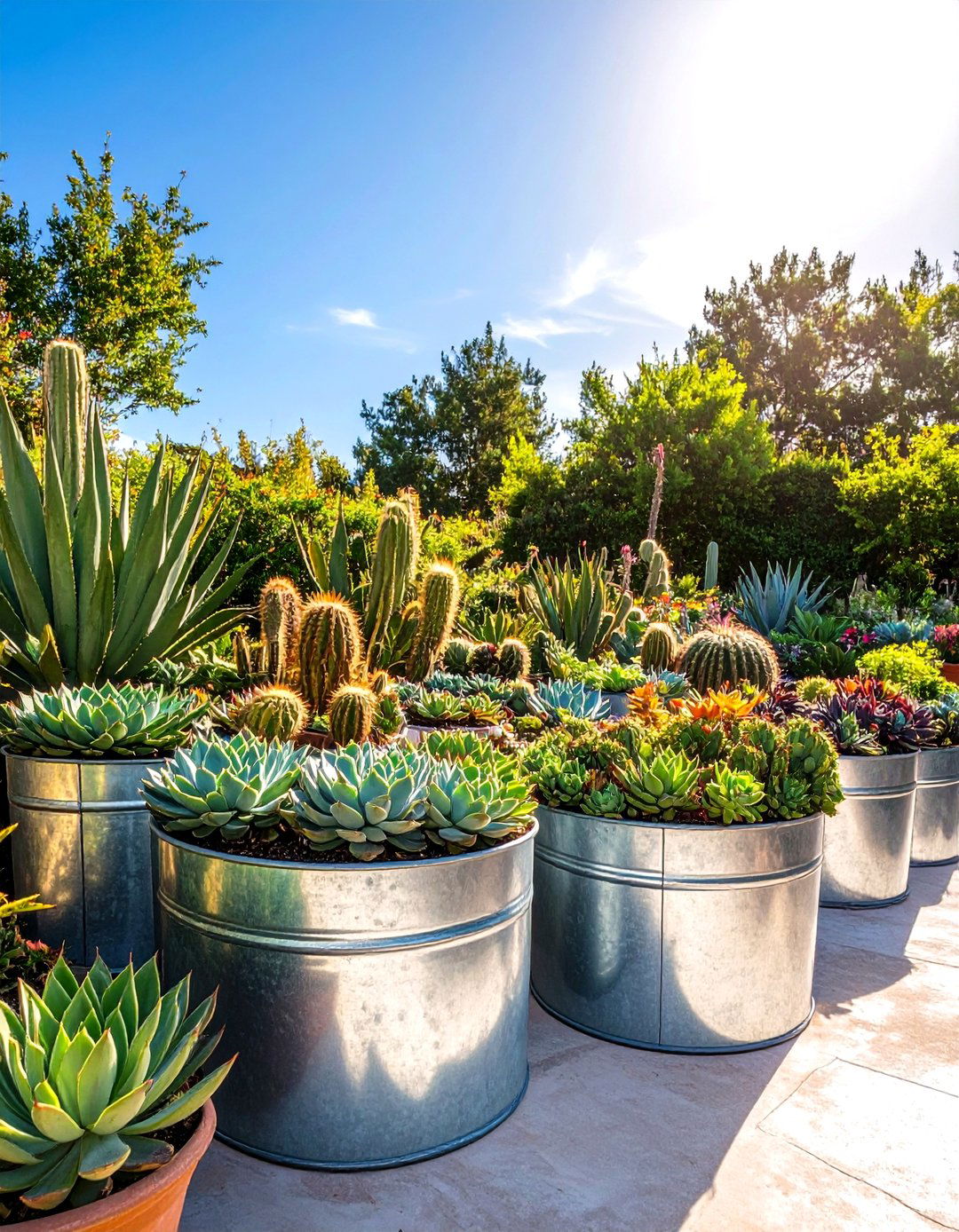

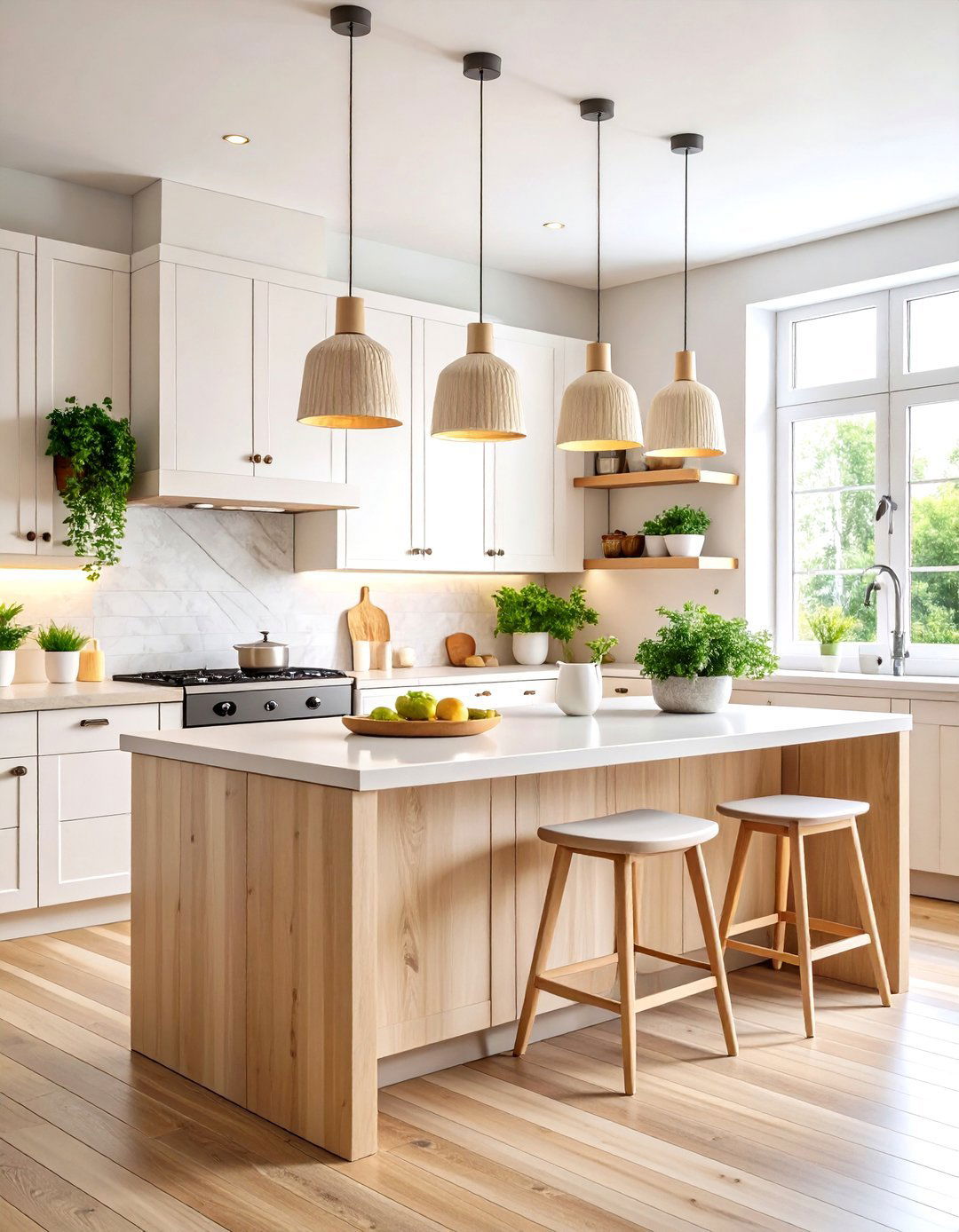
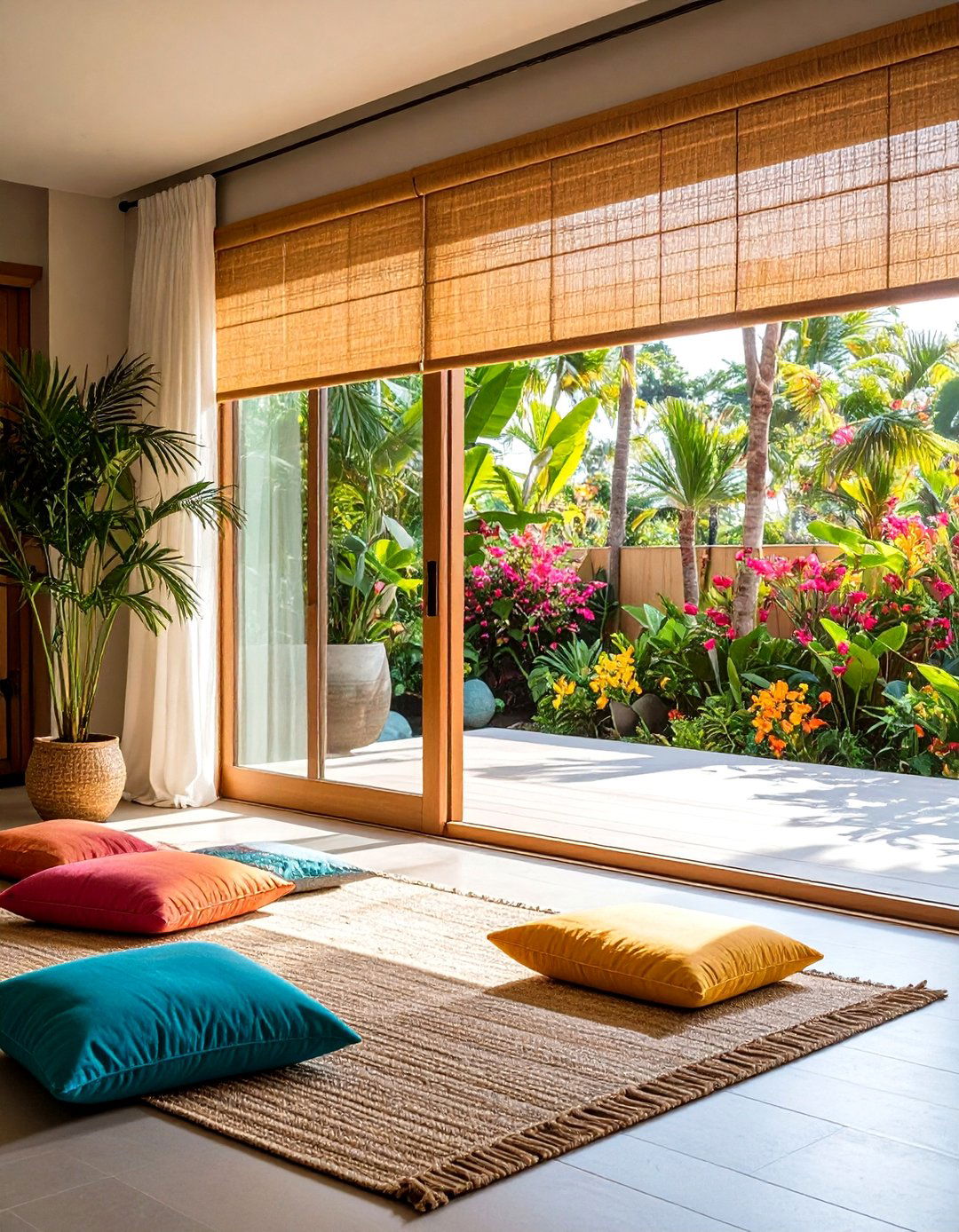
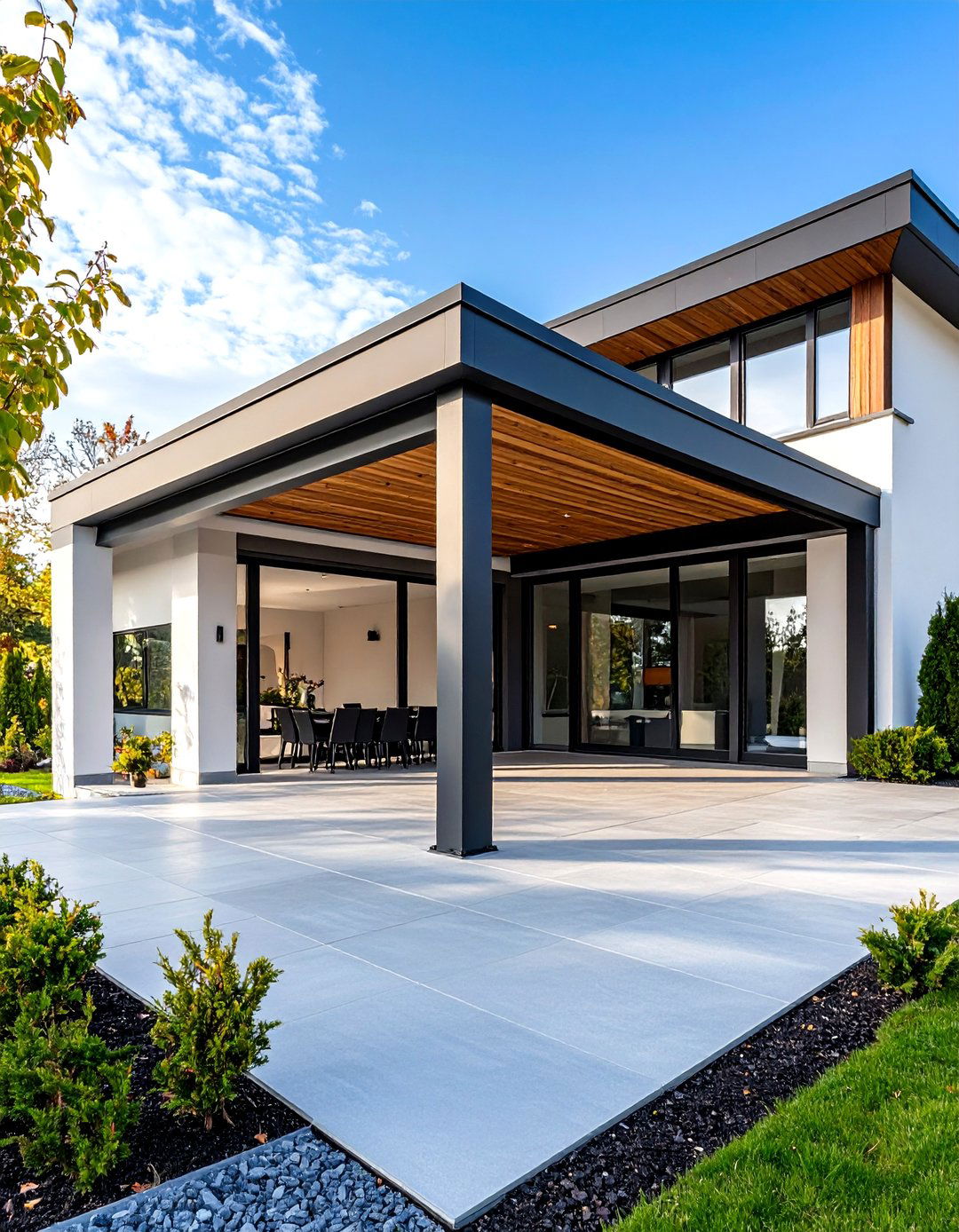
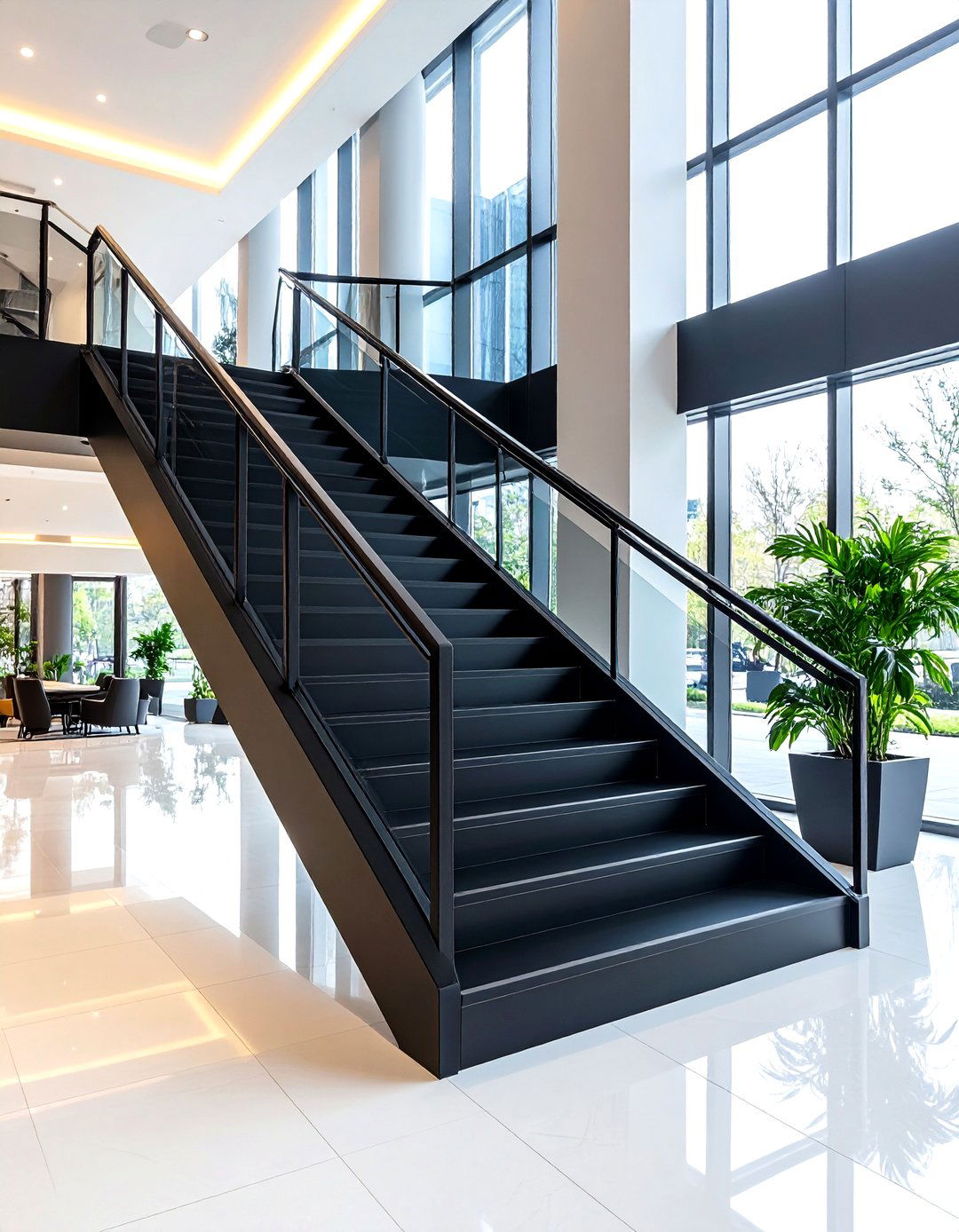

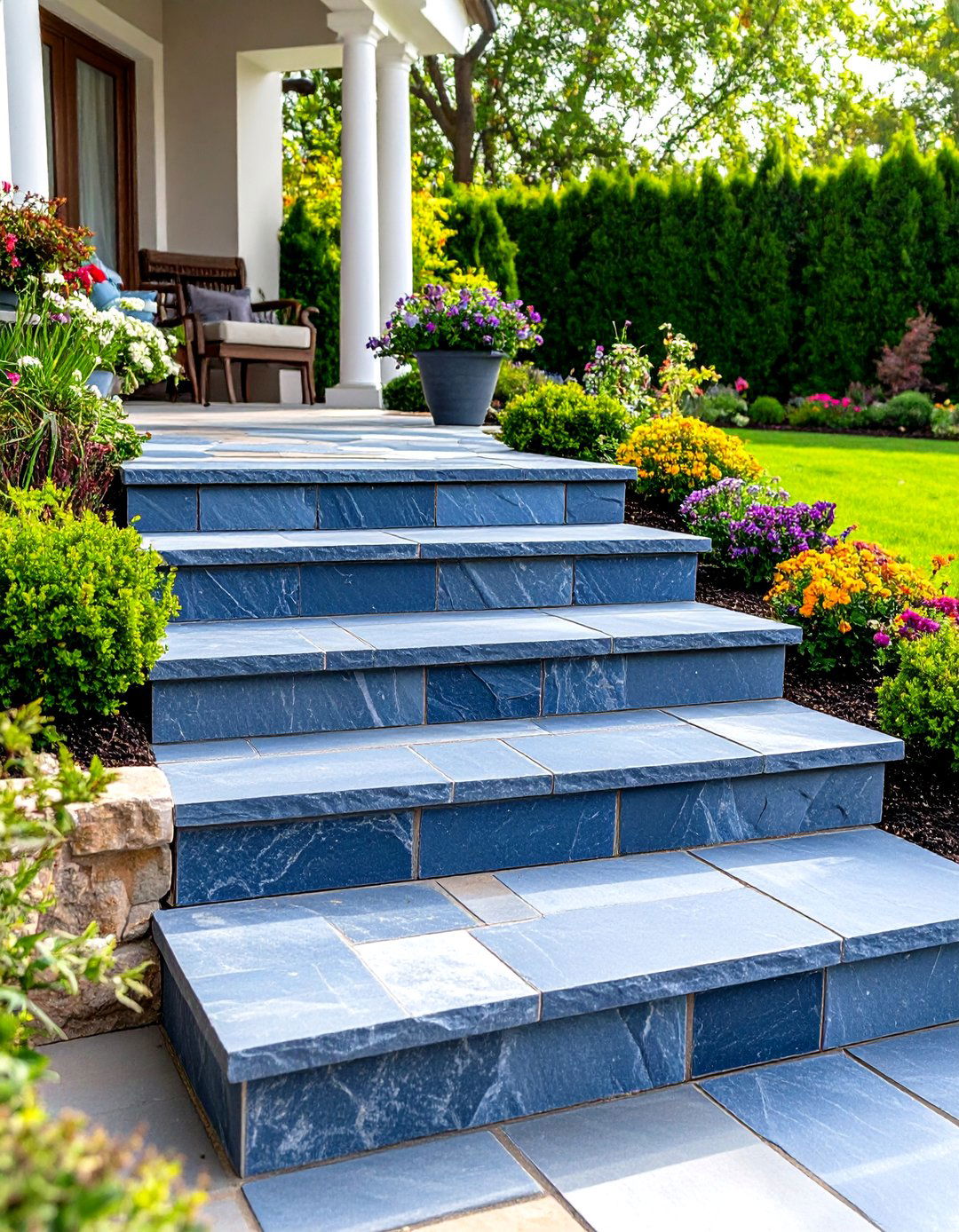
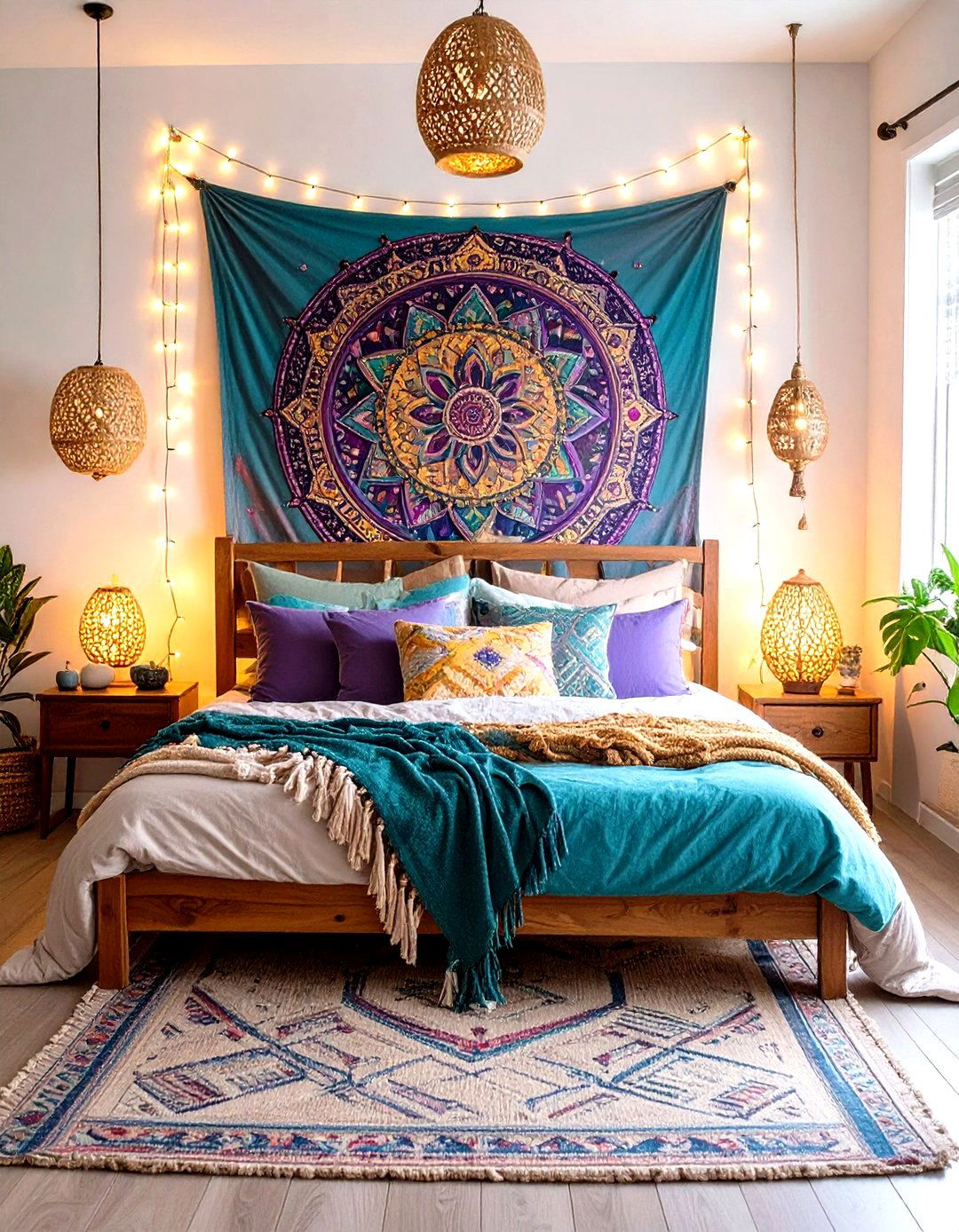
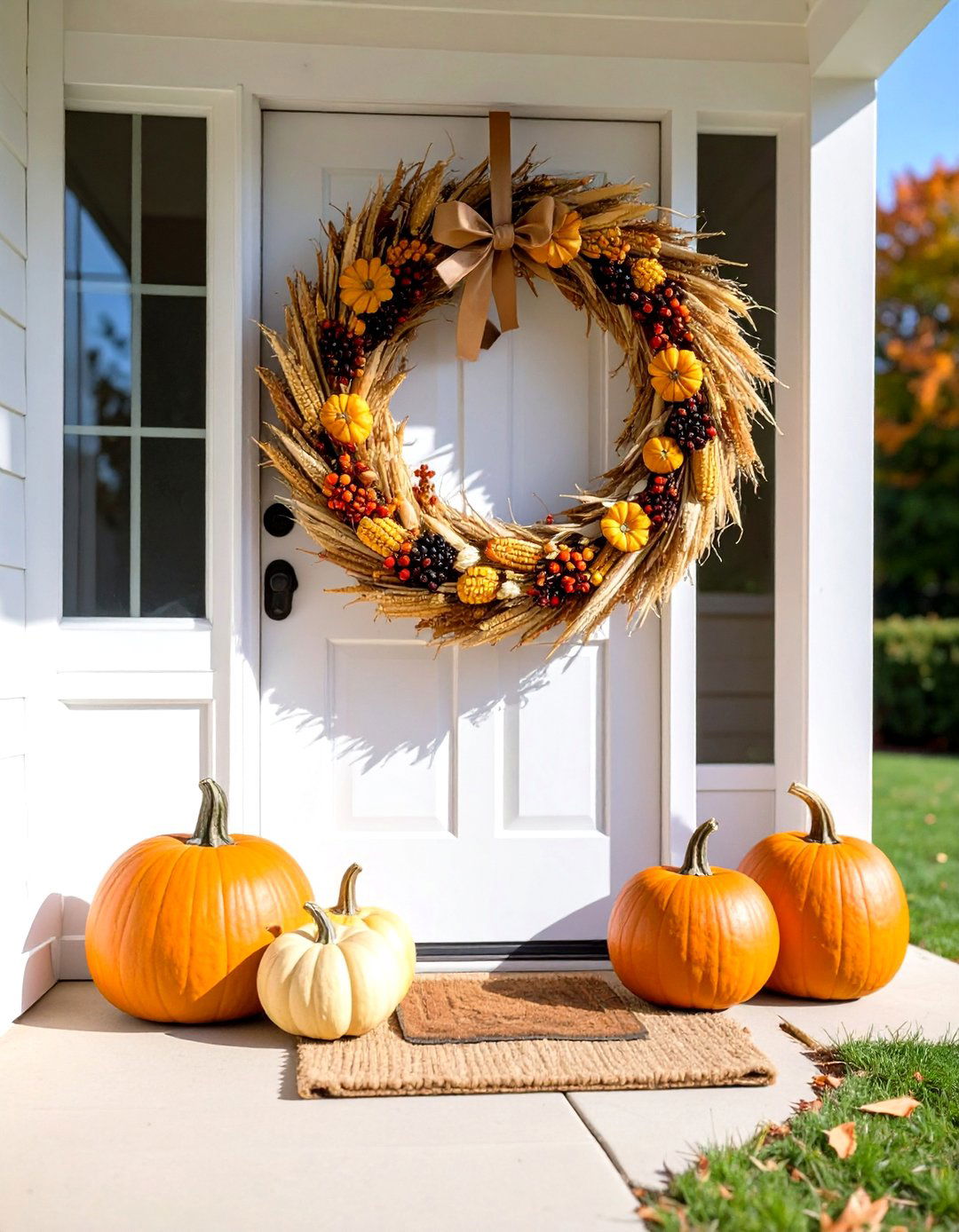
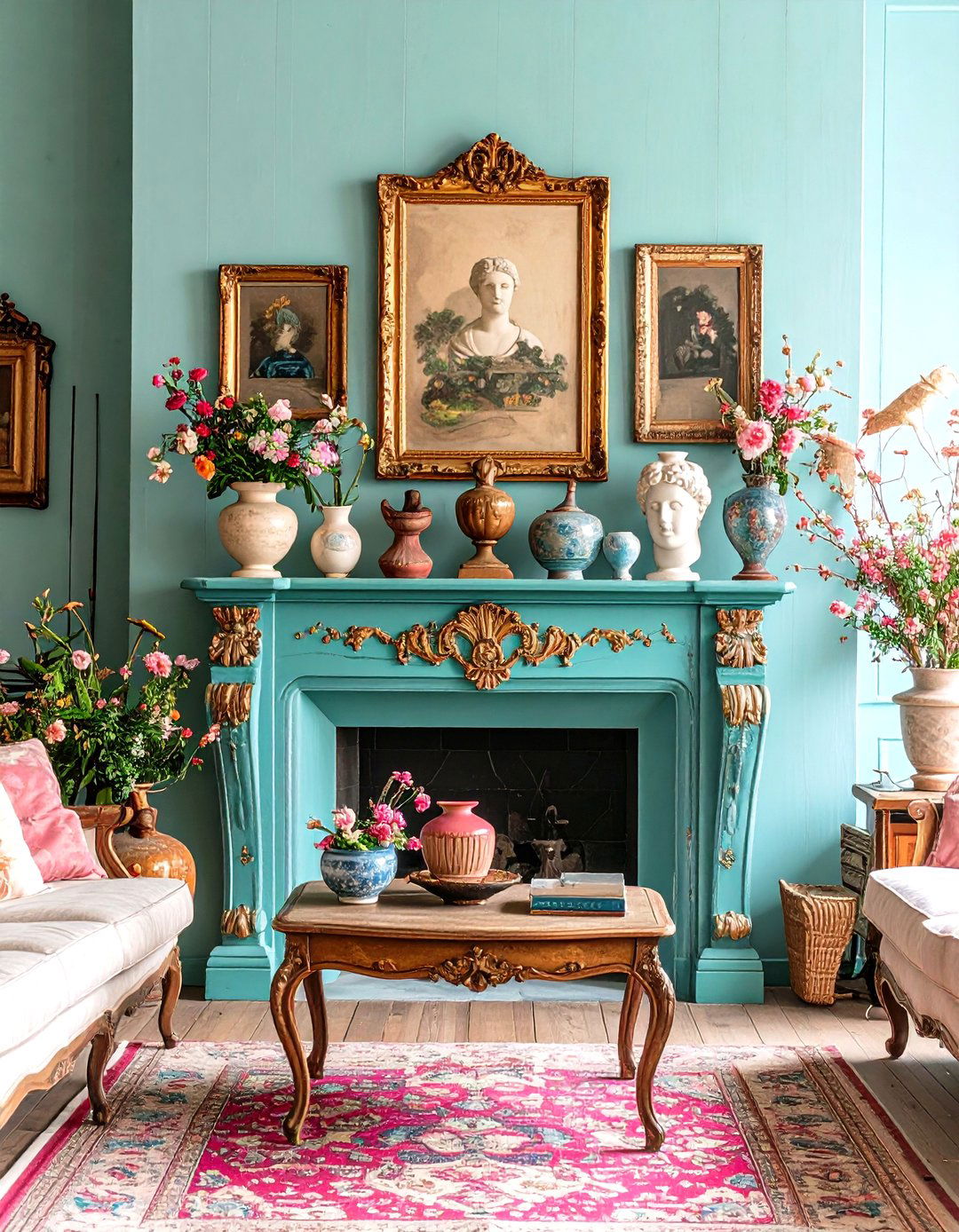
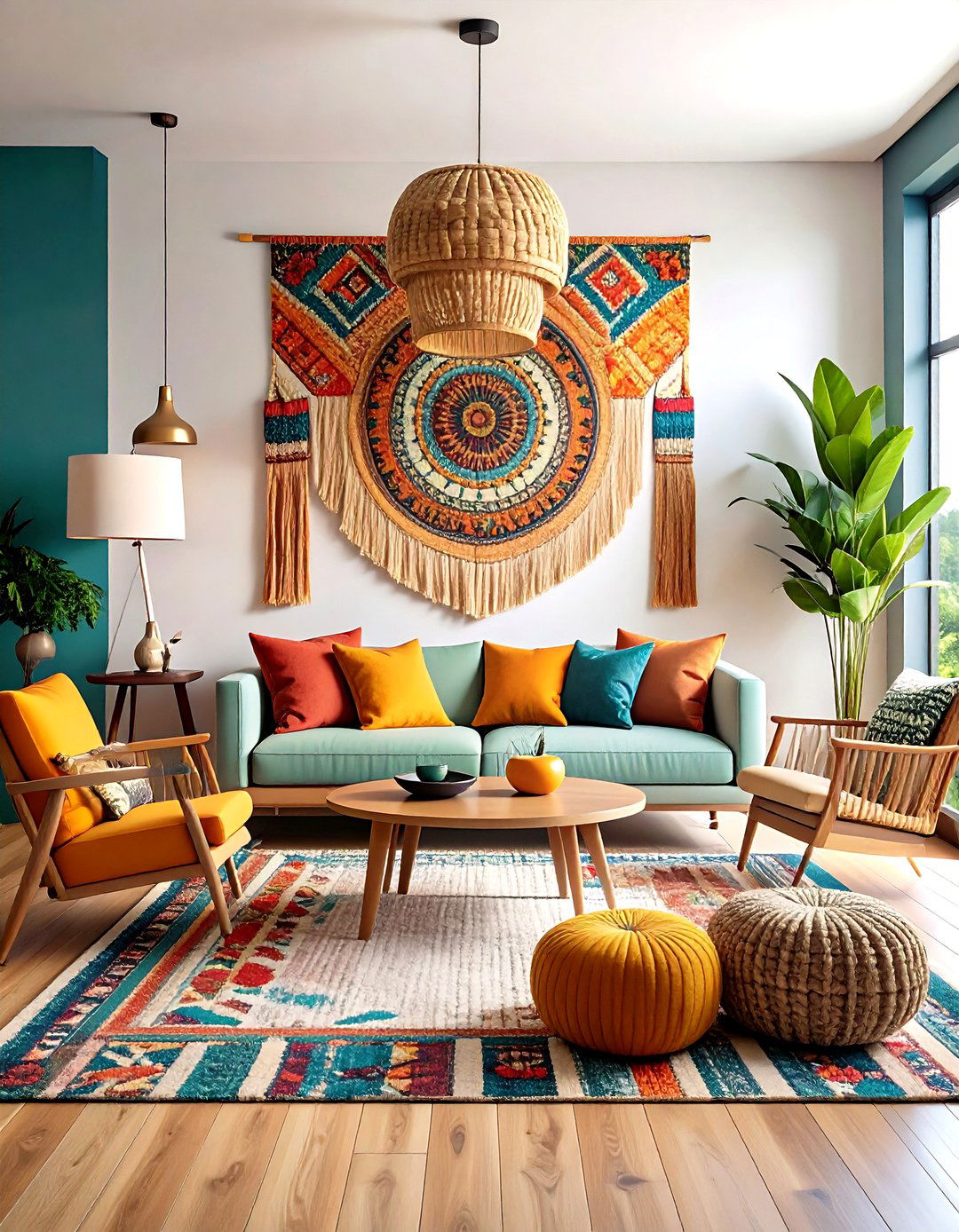
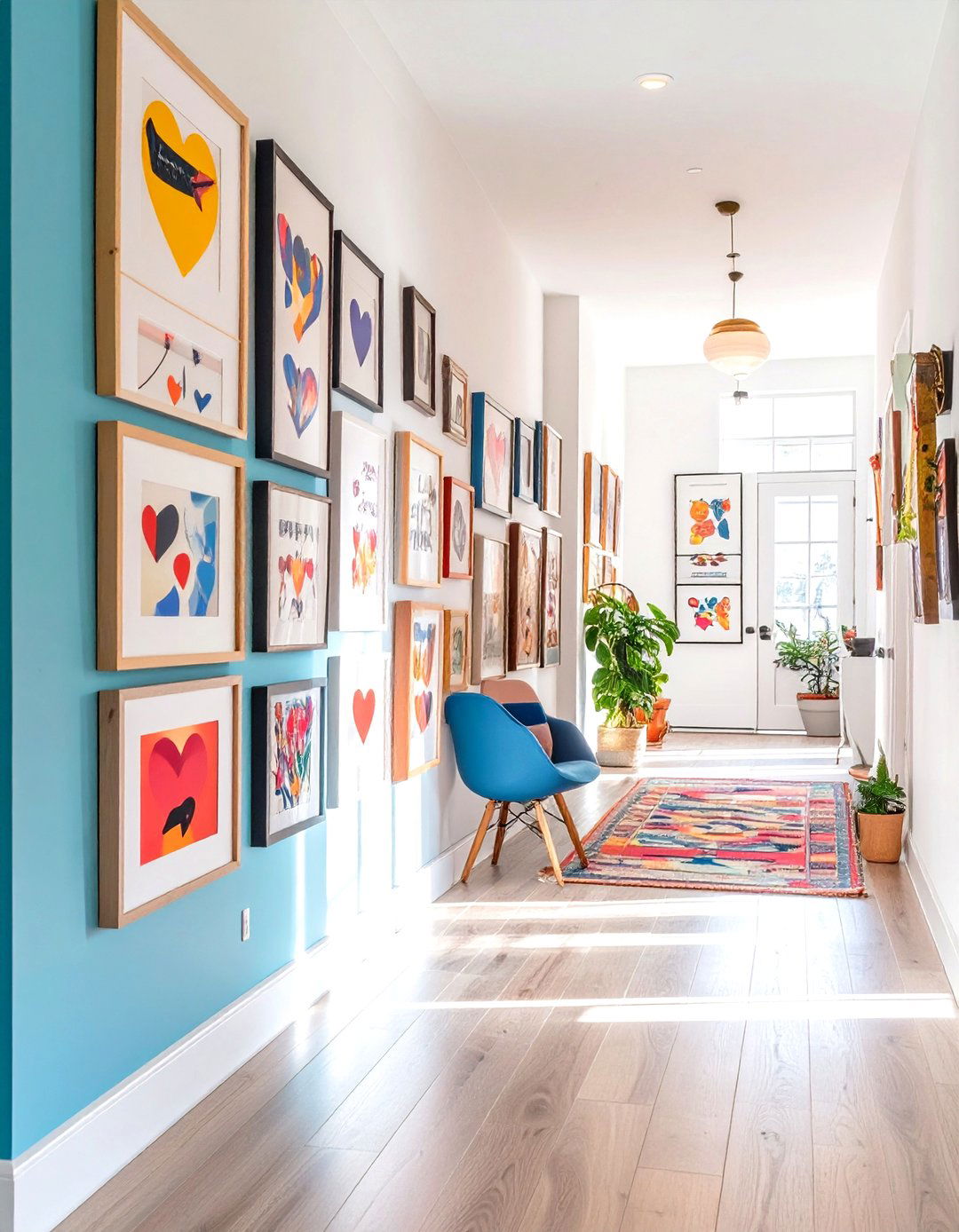
Leave a Reply